Blood in eye pictures. Subconjunctival Hemorrhage: Causes, Treatment, and Prevention of Eye Bleeding
What causes blood in the eye. How is subconjunctival hemorrhage treated. When should you see an ophthalmologist for eye bleeding. What are the symptoms of subconjunctival hemorrhage. How long does it take for a subconjunctival hemorrhage to heal. Can subconjunctival hemorrhage affect vision. What preventive measures can reduce the risk of eye bleeding.
Understanding Subconjunctival Hemorrhage: The Red Spot in Your Eye
Have you ever noticed a bright red spot in the white of your eye? This alarming sight is often a subconjunctival hemorrhage, a condition that occurs when small blood vessels break beneath the clear tissue covering the white part of the eye (sclera). While it may look frightening, a subconjunctival hemorrhage is usually harmless and doesn’t affect vision.
The term “subconjunctival” refers to the location of the bleeding – under the conjunctiva, which is the clear membrane covering the white of the eye. When blood vessels in this area rupture, blood becomes trapped, creating a vivid red appearance that can range from a small dot to a larger patch covering the entire white of the eye.

Key Characteristics of Subconjunctival Hemorrhage:
- Bright red appearance in the white of the eye
- Usually painless
- Does not typically affect vision
- Often resolves on its own within 1-2 weeks
- May change color as it heals, similar to a bruise
Common Causes of Subconjunctival Hemorrhage: Why Does It Happen?
Identifying the exact cause of a subconjunctival hemorrhage can be challenging, as it often occurs spontaneously. However, several factors can increase the likelihood of experiencing this condition:
Physical Strain and Pressure:
- Sudden increases in blood pressure from coughing, sneezing, or laughing
- Heavy lifting or strenuous exercise
- Straining during bowel movements
- Vomiting
Trauma and External Factors:
- Direct injury to the eye
- Rubbing the eyes vigorously
- Eye surgery, including LASIK or cataract procedures
Medical Conditions and Medications:
- Use of blood-thinning medications (e.g., aspirin, warfarin)
- Hypertension (high blood pressure)
- Diabetes
- Blood clotting disorders (rare)
- Vitamin K deficiency (uncommon)
Is it possible to prevent subconjunctival hemorrhages? While not all cases can be avoided, taking certain precautions may help reduce the risk:
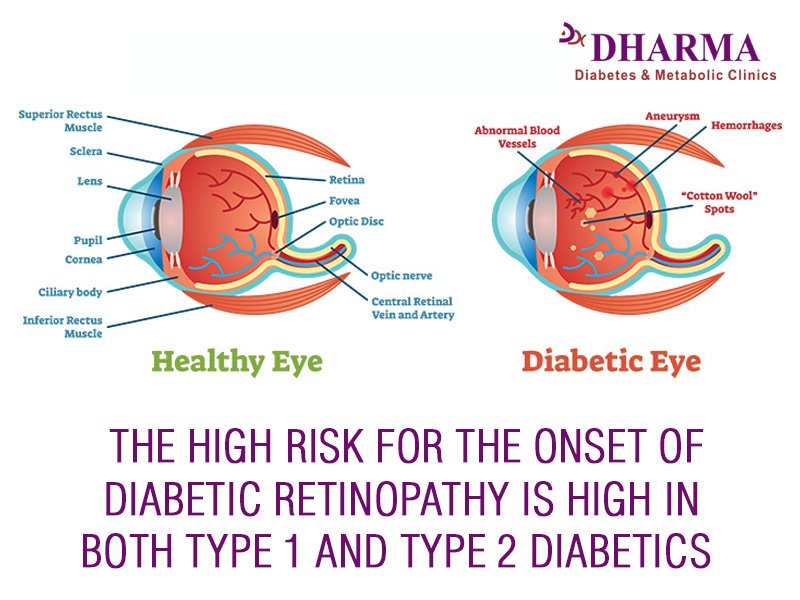
- Control blood pressure through diet, exercise, and medication if prescribed
- Avoid rubbing your eyes excessively
- Use proper protective eyewear during sports or potentially hazardous activities
- Manage underlying health conditions that may contribute to weakened blood vessels
- Consult with your doctor about the use of blood-thinning medications if you experience frequent subconjunctival hemorrhages
Diagnosis and Treatment: What to Expect When You See a Doctor
When you experience a subconjunctival hemorrhage, it’s natural to wonder if medical attention is necessary. In most cases, the condition doesn’t require treatment and will resolve on its own. However, there are situations where consulting an eye care professional is advisable.
When to See an Ophthalmologist:
- If the hemorrhage is accompanied by pain or vision changes
- If you experience recurrent subconjunctival hemorrhages
- If you have a history of bleeding disorders or are taking blood-thinning medications
- If the hemorrhage doesn’t improve after two weeks
- If you notice any additional symptoms such as eye discharge or swelling
During an eye examination, your ophthalmologist will likely perform the following steps:

- Review your medical history and any medications you’re taking
- Conduct a visual acuity test to check your vision
- Examine your eye using a slit lamp microscope to assess the extent of the hemorrhage
- Check your blood pressure
- Potentially order blood tests if a bleeding disorder is suspected
How is a subconjunctival hemorrhage treated? In most cases, no specific treatment is required. The blood will be reabsorbed naturally over time. However, your doctor may recommend:
- Artificial tears or lubricating eye drops to alleviate any discomfort
- Avoiding activities that may increase eye pressure or cause rebleeding
- Continuing any prescribed medications unless otherwise instructed
- Applying a cold compress to reduce swelling if present
The Healing Process: What to Expect as Your Eye Recovers
Understanding the timeline and stages of healing can help alleviate concerns as you watch the subconjunctival hemorrhage resolve. How long does it typically take for a subconjunctival hemorrhage to heal?
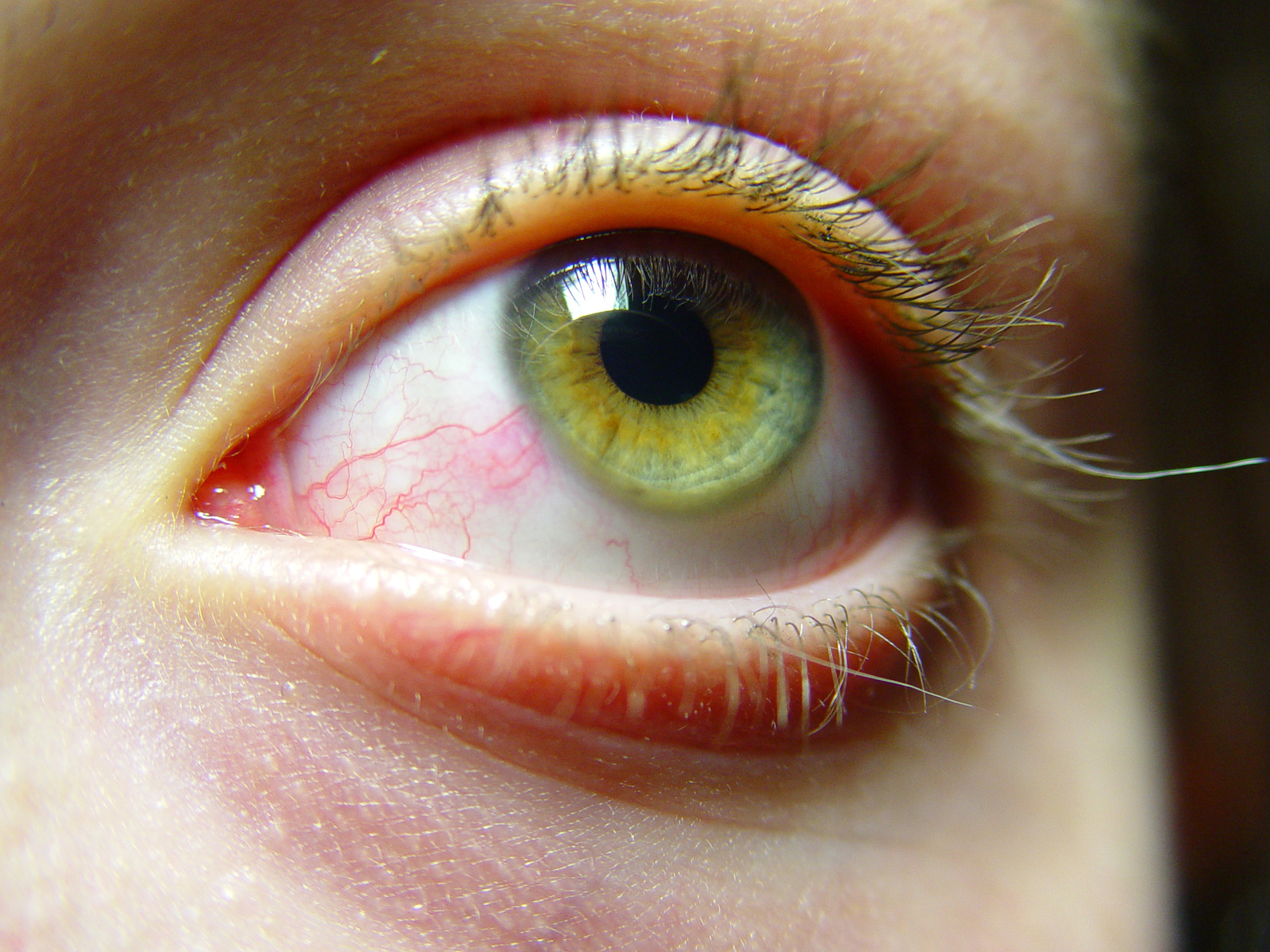
Most subconjunctival hemorrhages clear up within 1-2 weeks. During this time, you may notice changes in the appearance of the affected area:
- Initial bright red color
- Gradual fading and color changes (similar to a bruise)
- Possible yellowish tinge as the blood is reabsorbed
- Return to normal white appearance
Can you speed up the healing process? While the body needs to naturally reabsorb the blood, you can support healing by:
- Avoiding eye rubbing
- Protecting your eye from further injury
- Using artificial tears if recommended by your doctor
- Getting adequate rest and maintaining overall health
Potential Complications and Red Flags: When to Be Concerned
While subconjunctival hemorrhages are typically benign, it’s important to be aware of potential complications or signs that may indicate a more serious condition. What symptoms should prompt immediate medical attention?
- Severe eye pain
- Sudden vision changes or loss
- Persistent redness beyond two weeks
- Frequent recurrence of subconjunctival hemorrhages
- Eye discharge or crusting
- Swelling of the eye or surrounding area
- Sensitivity to light (photophobia)
These symptoms could indicate other eye conditions that require prompt evaluation, such as:

- Acute glaucoma
- Eye infection
- Orbital cellulitis
- Uveitis
- Corneal abrasion or ulcer
Prevention Strategies: Minimizing the Risk of Future Occurrences
While not all subconjunctival hemorrhages can be prevented, there are steps you can take to reduce your risk of experiencing them in the future. What preventive measures can help protect your eyes?
Lifestyle Modifications:
- Practice good eye hygiene, avoiding rubbing or touching your eyes unnecessarily
- Wear protective eyewear during sports or potentially hazardous activities
- Manage stress levels through relaxation techniques or exercise
- Maintain a balanced diet rich in vitamins and nutrients that support eye health
- Stay hydrated to support overall vascular health
Medical Management:
- Control high blood pressure through medication and lifestyle changes if prescribed
- Discuss the use of blood-thinning medications with your doctor if you experience frequent hemorrhages
- Manage underlying health conditions that may contribute to weakened blood vessels
- Consider vitamin K supplementation under medical supervision if deficiency is suspected
Environmental Factors:
- Use a humidifier in dry environments to prevent eye irritation
- Take regular breaks when doing close-up work or using digital devices to reduce eye strain
- Protect your eyes from UV radiation with sunglasses when outdoors
Subconjunctival Hemorrhage in Special Populations: Considerations for Different Age Groups
The occurrence and implications of subconjunctival hemorrhage can vary depending on age and overall health status. How does this condition affect different groups?
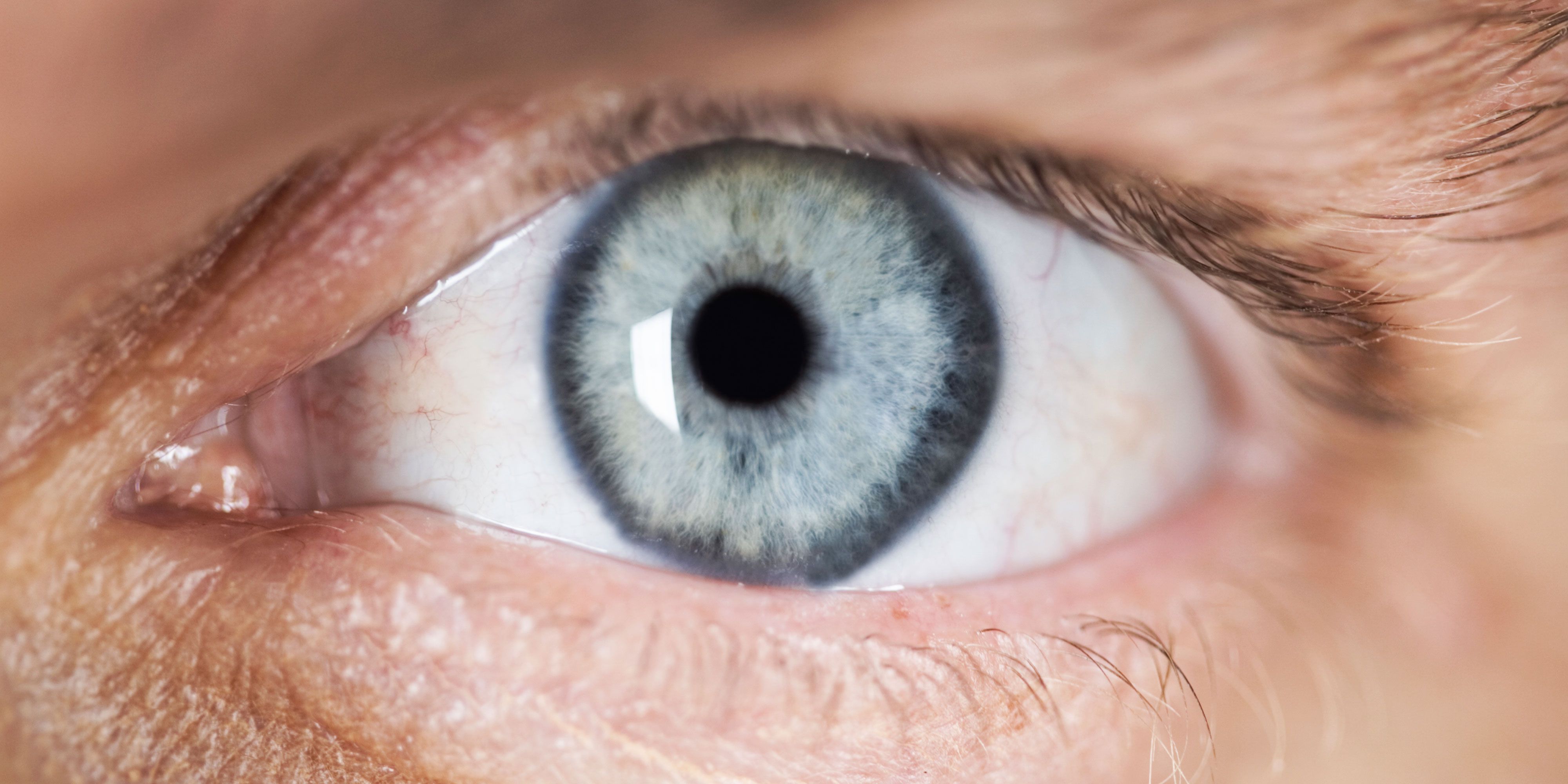
Subconjunctival Hemorrhage in Children:
While less common in children, subconjunctival hemorrhages can occur due to:
- Trauma from accidents or sports injuries
- Severe coughing or vomiting
- Rarely, as a sign of child abuse (when accompanied by other suspicious injuries)
Parents should monitor the condition closely and consult a pediatric ophthalmologist if there are any concerns.
Subconjunctival Hemorrhage in Older Adults:
Older individuals may be more prone to subconjunctival hemorrhages due to:
- Increased use of blood-thinning medications
- Age-related weakening of blood vessels
- Higher prevalence of conditions like hypertension and diabetes
Regular eye exams are crucial for this age group to monitor overall eye health and detect any underlying issues.
Subconjunctival Hemorrhage During Pregnancy:
Pregnant women may experience an increased risk of subconjunctival hemorrhages due to:
- Hormonal changes affecting blood vessels
- Increased blood volume and pressure
- Straining during labor and delivery
While usually harmless, any eye changes during pregnancy should be discussed with an obstetrician or ophthalmologist.
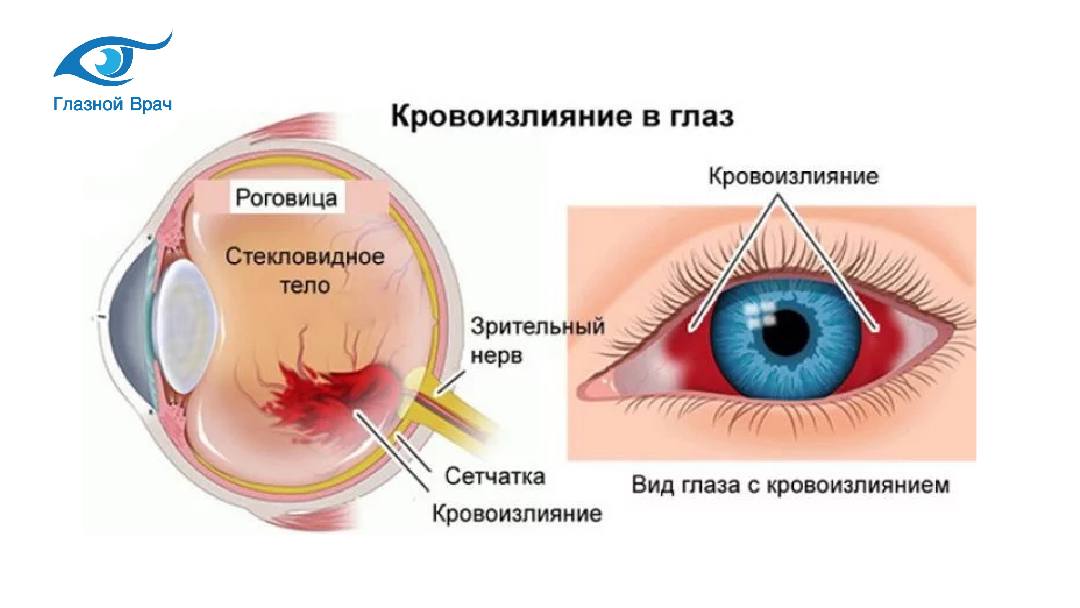
Beyond the Red Spot: Understanding the Importance of Regular Eye Care
A subconjunctival hemorrhage, while often benign, serves as a reminder of the importance of regular eye care and overall health maintenance. How can you prioritize your eye health beyond addressing acute issues?
Regular Eye Examinations:
- Schedule comprehensive eye exams as recommended by your eye care professional
- For adults, this typically means every 1-2 years, or more frequently if you have specific risk factors
- Children should have their first eye exam between 6-12 months of age, with follow-ups as advised by their pediatrician or eye doctor
Monitoring Overall Health:
- Keep up with regular health check-ups, as many systemic conditions can affect eye health
- Manage chronic conditions like diabetes and hypertension, which can impact blood vessels throughout the body, including in the eyes
- Discuss any medications you’re taking with your healthcare providers to understand potential effects on eye health
Lifestyle Choices for Eye Health:
- Maintain a balanced diet rich in vitamins A, C, E, and omega-3 fatty acids
- Protect your eyes from UV radiation with quality sunglasses
- Practice the 20-20-20 rule when using digital devices: Every 20 minutes, look at something 20 feet away for 20 seconds
- Stay physically active to promote overall cardiovascular health, which benefits eye health
- Avoid smoking and limit alcohol consumption, as these can negatively impact eye health
By understanding subconjunctival hemorrhages and prioritizing overall eye health, you can ensure that your vision remains clear and your eyes stay healthy for years to come. Remember, while a red spot in your eye can be alarming, it’s often a harmless occurrence. However, always consult with an eye care professional if you have any concerns about your eye health or experience unusual symptoms.
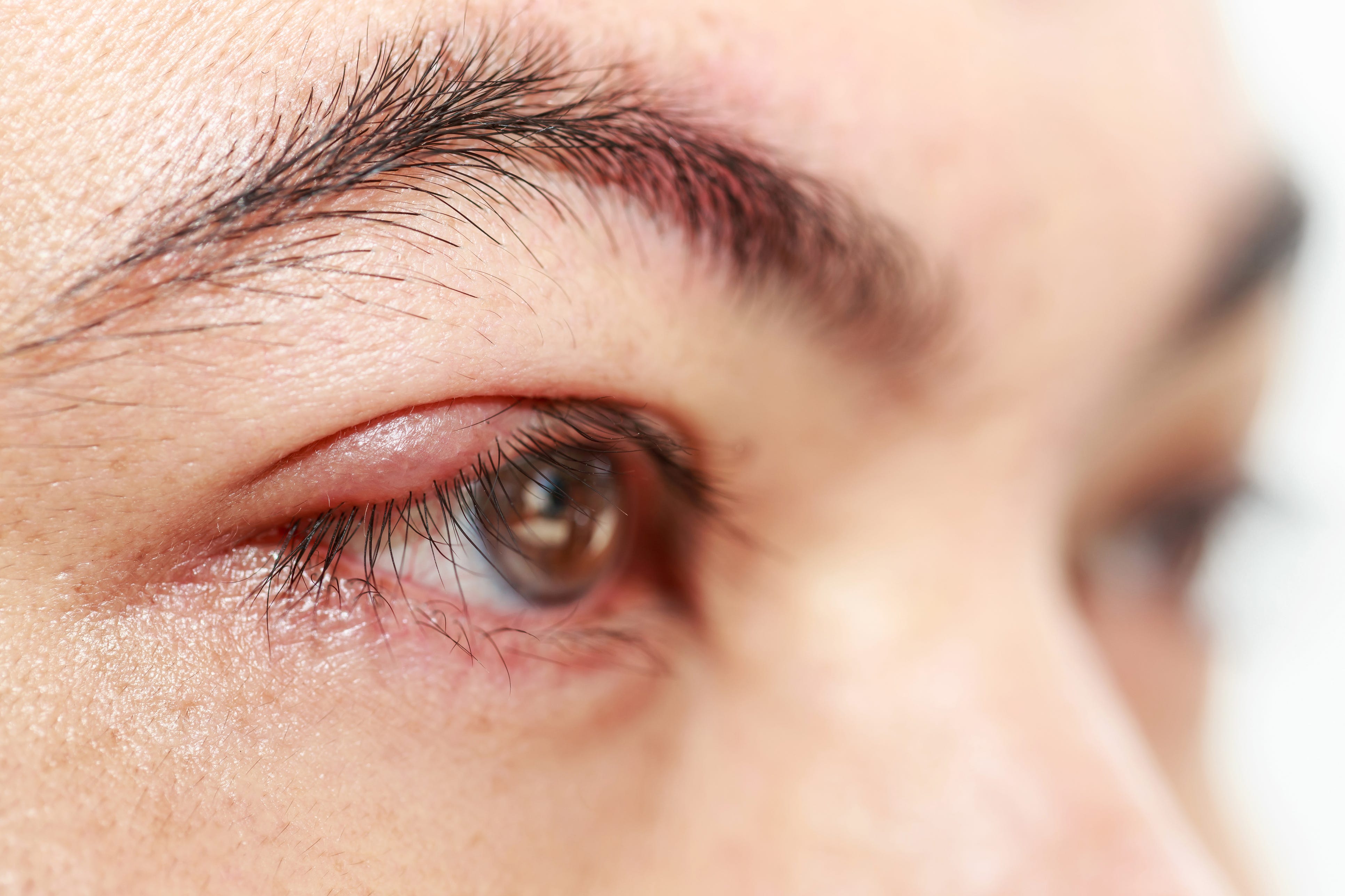
What a Burst Blood Vessel in Eye Means
A red spot in your eye might make you feel like a villain in a horror movie, but it is typically not a reason for alarm. It is likely a subconjunctival hemorrhage.
A subconjunctival hemorrhage is a condition in which small, delicate blood vessels break under the clear conjunctival tissue which covers the white of the eye called the sclera. Blood gets trapped under the conjunctival membranes, giving the eye a bright, blood red appearance.
Find a Board-Certified Ophthalmologist
Subconjunctival Hemorrhage Causes
It is not always possible to identify the cause of broken blood vessels in the eye, but possible causes include:
- A sudden increase in blood pressure that can result from coughing, sneezing or laughing
- Heavy lifting
- Straining from constipation
- Use of aspirin or blood thinners such as Coumadin or Warfarin
- Eye trauma
- Eye surgery such as LASIK or cataract surgery
- Vitamin K deficiency or blood clotting disorder (rare)
- Rubbing the eyes
Subconjunctival Hemorrhage Treatment
Most subconjunctival hemorrhages are not dangerous and they should not interfere with vision. It is normal to feel some eye irritation and sensitivity though. Artificial tears or lubricating drops can help soothe irritation, but the broken blood vessels have to repair themselves naturally. As the eye heals, try not to rub it because that can delay the healing process or break more blood vessels.
When to see an Ophthalmologist
A subconjunctival hemorrhage will typically disappear within one to two weeks, and most people won’t need to see an ophthalmologist. The affected area may even change color, much like a bruise, as the blood is reabsorbed. Call an ophthalmologist, however, if you have symptoms besides minor eye irritation or eye sensitivity. Eye discharge, swelling, sudden change in vision or sharp pain may indicate a different eye problem.
Make comprehensive eye exams a part of your preventive care. During a complete eye exam, your ophthalmologist will check the health of your eyes and update your prescription. Many degenerative diseases like glaucoma and macular degeneration can develop without any symptoms, and a delayed diagnosis can result in permanent vision loss. So call your eye doctor today or click here to find a board-certified ophthalmologist.
Related Articles:
Find an Ophthalmologist
Causes and Cures for Red, Bloodshot Eyes
How to Protect Your Eyes During Your Favorite Hobbies and Sports
Subconjunctival Hemorrhage (Blood in Eye): Causes & Treatment
What is a Subconjunctival Hemorrhage?
A subconjunctival hemorrhage is a red spot in the eye which occurs when small, delicate blood vessels break beneath the tissue covering the white of the eye (conjunctiva). A subconjunctival hemorrhage usually is benign, causing no vision problems or discomfort despite its appearance.
But eye redness also can be a sign of other types of potentially serious eye conditions. Particularly if you have eye discharge, you should visit your eye doctor for an eye exam to rule out an infection caused by bacteria, viruses or other microorganisms.
In addition, you should seek immediate care from an eye care professional whenever you experience unusual and persistent redness of the eye accompanied by a sudden change in vision, pain or strong light sensitivity. This type of eye redness can be a sign of other eye problems such as sudden onset of glaucoma.
NEED AN EYE EXAM? Find an eye doctor near you and schedule an appointment.
What causes subconjunctival hemorrhages?
Although it is not always possible to identify the source of the problem, some potential causes of subconjunctival hemorrhage include:
Eye trauma
A sudden increase in blood pressure that can result from heavy lifting, coughing, sneezing, laughing and constipation
Aspirin or blood thinners such as warfarin (one brand name is Coumadin)
Rarely, a blood clotting disorder or vitamin K deficiency (vitamin K aids the
functioning of proteins necessary for blood clotting)Eye surgery, including LASIK and cataract surgery
How are subconjunctival hemorrhages treated?
Lubricant artificial tears can soothe the eyes, although eye drops cannot help repair the broken blood vessels.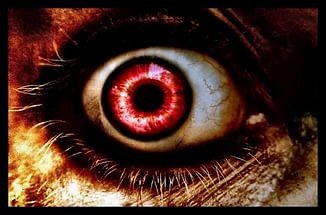
If you are taking aspirin or blood thinners, continue taking them unless your doctor specifically instructs you to do otherwise.
Make sure not to rub your eye, which can increase the risk of re-bleeding right after onset — similar to how a nose bleed is susceptible to re-bleeding in the early stages.
How long do subconjunctival hemorrhages last?
In most cases, it takes seven to 10 days for a subconjunctival hemorrhage to resolve on its own. As the blood gradually disappears with time, the affected area can change color, like a bruise.
Page updated March 2021
Subconjunctival Hemorrhage: Causes, Treatment, and Prevention
What Is Subconjunctival Hemorrhage?
A subconjunctival hemorrhage is a red spot on your eye caused by a broken blood vessel. It might look scary, but it’s usually harmless.
Your conjunctiva, the clear membrane that covers your eye, has a lot of tiny blood vessels. When blood gets trapped beneath this layer, it’s called subconjunctival. This blood doesn’t involve the inside of your eye or your cornea, so your vision isn’t affected.
Subconjunctival Hemorrhage Symptoms
You might not even know that a blood vessel has broken until you look in a mirror. You probably won’t notice any symptoms like vision changes, discharge, or pain. You may only have a scratchy feeling on the surface of your eye.
The red spot may grow over 24 to 48 hours. Then it will slowly turn yellow as your eye absorbs the blood.
Call your doctor if the blood doesn’t go away in 2 or 3 weeks, if you also have pain or vision problems, if you have more than one subconjunctival hemorrhage, or if the blood is anywhere inside the colored part of your eye (iris).
Subconjunctival Hemorrhage Causes
These hemorrhages often happen when your blood pressure spikes because of:
Some red spots result from an injury or illness, such as:
Less common causes include:
Your odds of getting a subconjunctival hemorrhage go up as you get older, especially after age 50, because you’re more likely to get conditions such as diabetes and high blood pressure.
Subconjunctival Hemorrhage Diagnosis
Your doctor can tell that you have a subconjunctival hemorrhage just from looking at your eye. They’ll ask about your overall health, including injuries. They may also check your blood pressure and look closely at your eye with a device called a slit lamp.
You could need a blood test to make sure you don’t have a serious bleeding disorder.
Subconjunctival Hemorrhage Treatment
Most red spots heal on their own without treatment. Depending on how big it is, it may take a few days or a few weeks to go away. There’s no way to speed up this process.
Self-care
Ice packs and over-the-counter artificial tears can help ease any swelling and discomfort.
Medical care
Your doctor will treat any injury or condition that caused your subconjunctival hemorrhage, such as medication for high blood pressure.
Subconjunctival Hemorrhage Prevention
If you need to rub your eye, do it gently. If you wear contact lenses, clean and disinfect them regularly. Wear protective gear when you’re playing sports or doing activities that could cause an eye injury. Keep bleeding disorders under control.
Subconjunctival Hemorrhage Complications
In most cases, there are no complications. It’s rare, but a total subconjunctival hemorrhage may be a sign of a serious vascular disorder in older people.
Subconjunctival Hemorrhage Outlook
A subconjunctival hemorrhage will usually go away without causing any vision problems. It happens again about 10% of the time in most people, or more often in those who take medications like blood thinners.
Red eyes: List of common causes
Red eyes can be the sign of a minor irritation or a serious medical condition, such as an infection.
Bloodshot or red eyes occur when small blood vessels that are present on the surface of the eye become enlarged and congested with blood. This happens due to an insufficient amount of oxygen being supplied to the cornea or the tissues covering the eye.
Bloodshot eyes by themselves are generally not a reason to be overly concerned, but when coupled with eye pain, abnormal drainage, or impaired vision this can indicate a serious medical problem.
Conjunctivitis is also known as pink eye and is mostly caused by viruses, which may be spread by the hands.
Conjunctivitis, commonly known as pinkeye, is an infection that includes swelling and irritation of the conjunctiva. The conjunctiva is a thin transparent membrane that lines the eyelid and loops back to cover the the white part of the eye.
An infection of the conjunctiva irritates the blood vessels causing them to swell up. It is this inflammation that makes the whites of the eyes appear reddish or even a bit pink.
Viruses cause up to 80 percent of all cases of conjunctivitis. Pink eye is prevalent among school children and is very contagious.
The infection is commonly spread through direct contact with contaminated fingers or personal items. It is often associated with an upper respiratory infection and spread through coughing.
Allergic conjunctivitis can be due to an allergy or an irritant such as dust. Wearing contact lenses for too long or not properly cleaning them can also lead to conjunctivitis. Conjunctivitis caused by allergies or irritants is not contagious.
People usually end up getting pink eye in both eyes because an infection can easily spread from one eye to the other. Signs and symptoms of conjunctivitis include:
- itchy eye
- excess tear production
- redness
- discharge
- light sensitivity
- poor vision
- gritty feeling in one or both eyes
A doctor can typically spot conjunctivitis due to the telltale reddish-pink eye or by the type of discharge present. People with bacterial conjunctivitis may not have the red eye but are likely to have a distinctive mucus discharge or drainage that is white, green, or yellow.
To confirm the diagnosis, a doctor may do a full eye examination or take a sample of any eye discharge for laboratory analysis.
If the outbreak is due to an allergy, a doctor may order an allergy test to determine the specific allergen that the person needs to avoid.
Treatment options for conjunctivitis depend on the type, so it is important to see a doctor if experiencing any of the signs and symptoms. Pink eye is not a serious condition and it does not typically cause any long-term vision problems. It will often clear up on its own.
To avoid spreading conjunctivitis, people should wash their hands frequently and avoid rubbing their eyes. They should also avoid sharing eye drops, cosmetics, towels, or pillowcases.
After bacterial or viral conjunctivitis clears up, people should dispose of any contact lenses, solutions, or eye makeup they used while they were infected to help avoid re-infection.
Symptoms of a corneal ulcer may include soreness of the eyes and sensitivity to the light.
A corneal ulcer is an open sore on the cornea that is typically caused by bacterial infections. They often appear following an eye injury, trauma, or some other type of damage.
Symptoms can include:
- red eyes
- pain in the eye
- soreness of the eye
- sensitivity to light
- mild to severe eye discharge
- reduced vision
- a white spot on the cornea
People with eyelid disorders, cold sores, and who wear contact lenses are at risk of developing corneal ulcers. Eyes are very susceptible to irritation from contact lenses, especially if the lenses are not handled safely, stored correctly, or cleaned properly.
Contact lenses can rub against the eye’s surface and slightly damage the outer cells. This damage may allow bacteria to penetrate the eye.
Other causes of corneal ulcers include:
If not treated properly, corneal ulcers can lead to severe vision loss or even loss of an eye.
Treatment options include antibiotics or antifungal agents. Special eye drops may be prescribed to help ease pain and reduce the chance of complications. Serious cases may require a cornea transplant.
Serious cases may require a cornea transplant.
A person who does not produce enough tears, or tears of good enough quality to lubricate and nourish their eyes properly, is said to suffer from dry eye or dry eye syndrome.
A medical condition, hormonal changes, and even some medicines can cause dry eye syndrome. Chronic dry eye can cause the surface of the eye to become inflamed and irritated, giving the eyes a red appearance. Symptoms of dry eye syndrome include:
- stinging or burning eyes
- foreign body sensation
- pain and redness in the eye
- excessive tears
- discomfort when wearing contact lenses
- blurry vision
- eye fatigue
- stringy eye discharge
- increased discomfort after watching television or reading
Only a doctor can determine if there is an underlying medical condition that is causing the dry eye. An ophthalmologist can perform tests to measure tear production if necessary.
Dry eye is incurable but can be treated. For mild cases, there are over-the-counter medications that may be helpful, such as artificial tears, gels, and ointments. Treatment options include artificial tears, prescription eye drops, or surgery depending on the severity of the condition.
The anti-inflammatory medication cyclosporine is the main prescription currently available to treat dry eye. It helps to decrease corneal damage, increase tear production, and reduce overall symptoms.
A subconjunctival hemorrhage is when blood builds up under the conjunctiva.
The conjunctiva contains many blood vessels and capillaries. These vessels can break and cause blood to leak into the area between the conjunctiva and the white of the eye.
When this happens, a small amount of blood builds up under the conjunctiva. This small accumulation of blood is called a subconjunctival hemorrhage. The minor bleeding under the eye’s outer membrane causes bright red spots to appear on the white on the eye.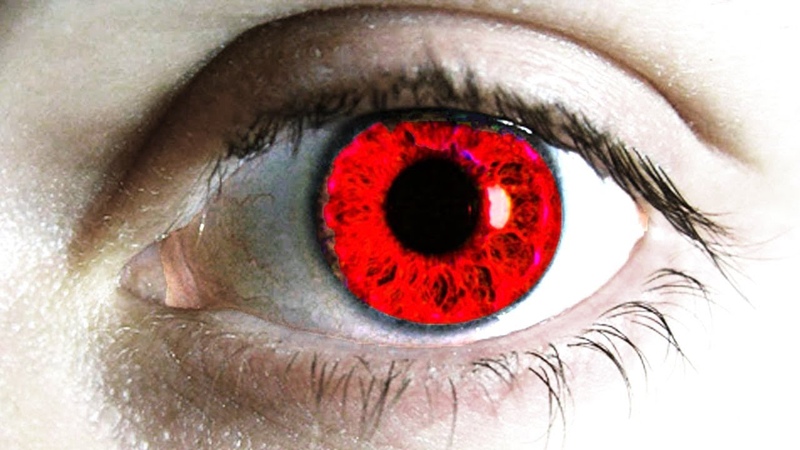
Subconjunctival hemorrhages usually occur due to a minor injury or trauma to the eye. Even rubbing the eye too hard can cause a hemorrhage.
The most common causes of subconjunctival hemorrhages are coughing, sneezing, and straining. People who have diabetes, high blood pressure, or who are taking certain medications can also get subconjunctival hemorrhages.
Subconjunctival hemorrhages occur on the surface of the eye. As they do not affect the cornea or the interior of the eye, vision is not affected.
They are typically not painful and cause no sensations, or real symptoms other than the red spots. Though red or blood in the eye can look serious, most subconjunctival hemorrhages are generally harmless and clear up on their own within a few days.
No treatment is typically necessary, but if they become irritated, a doctor may recommend artificial tears.
Other causes
These are just a few common disorders associated with red eyes. Others include:
- inflammation of the cornea, iris, or white of the eye
- glaucoma
- too much sun exposure
- dust or other particles in the eye
- injury
- swimming
- smoking or drinking
- environmental irritants or pollutants
Red eyes can develop suddenly or over time. Eye drops are helpful in many cases, and can be purchased over-the-counter or online. If the redness is not easing up and is accompanied by other symptoms, people should see a doctor.
Eye injuries, contact lenses, and frequent use of eye drops can all cause irritation leading to red eyes. A doctor can help a person to pinpoint the cause of their red eye problem and develop a treatment plan.
Common treatments include eye drops, antibiotics, creams, and oral medications. Most conditions are readily treatable and, if caught early, do not cause any permanent long-term damage.
Some serious medical conditions, including leukemia, sarcoidosis, and juvenile idiopathic arthritis, can also cause a red eye. As a result, getting a proper diagnosis is critical.
As a result, getting a proper diagnosis is critical.
People should not hesitate to contact their doctor with any questions or concerns if they have red eyes.
Read the article in Spanish.
Subconjunctival Hemorrhage
A subconjunctival hemorrhage occurs when a blood vessel breaks open in the white of the eye. It causes a bright red patch in the white of the eye. It’s similar to a bruise on the skin. This type of hemorrhage is common. It can look quite alarming, but it’s usually harmless.
Understanding the conjunctiva
The conjunctiva is the thin, skin-like layer that covers the inside of the eyelids and the surface of the eye. It has many tiny blood vessels that bring oxygen and nutrients to the eye. The sclera is the white part of the eye that lies beneath the conjunctiva. Sometimes a blood vessel in the conjunctiva breaks open and bleeds. The blood then collects under the conjunctiva and turns part of the eye red. Over several weeks, your body then absorbs the blood.
What causes subconjunctival hemorrhage?
In many cases, the cause isn’t known. But some health conditions may make it more likely. These include:
Eye injury
Eye surgery
High blood pressure
Inflammation of the conjunctiva
Contact lens use
Diabetes
Arteriosclerosis
Tumor of the conjunctiva
Diseases that affect blood clotting
Violent sneezing, coughing, or vomiting
Certain medicines that can increase bleeding, such as aspirin or blood thinners
Pushing hard during childbirth
Straining during constipation
Symptoms of subconjunctival hemorrhage
The main symptom is a red patch on the eye. You may notice it after waking up in the morning. In most cases just one eye will have a hemorrhage. It usually happens once and then goes away. But some health conditions may cause repeat hemorrhages. You may feel like you have something in your eye, but this is not common. The hemorrhage shouldn’t affect your eyesight or cause any pain. If you do have pain, you may have another type of problem with your eye.
But some health conditions may cause repeat hemorrhages. You may feel like you have something in your eye, but this is not common. The hemorrhage shouldn’t affect your eyesight or cause any pain. If you do have pain, you may have another type of problem with your eye.
Diagnosing subconjunctival hemorrhage
Your healthcare provider will ask about your health history. You may have a physical exam. This includes a basic eye exam. Your provider will make sure you don’t have other causes of red eye that may need other treatment.
You will need to see an eye doctor (ophthalmologist) if you have had an eye injury. This doctor might use a special lighted microscope to look closely at your eye. This helps show the doctor if the injury hurt the eye itself and not just its outer layer.
If this is not your first subconjunctival hemorrhage, your doctor may need to find the cause. For example, you may need blood tests to check for a blood clotting disorder.
Treatment for subconjunctival hemorrhage
In most cases you will not need treatment. The red patch will usually go away on its own in a few days to a few weeks. It will turn from red to brown and then yellow. There are no treatments to speed up this process. Your healthcare provider may suggest using artificial tears eye drops to help relieve any eye irritation.
If your subconjunctival hemorrhage was caused by a health condition, that condition will be treated. For example, you may need a blood pressure medicine to treat high blood pressure.
When to call your healthcare provider
Call your healthcare provider right away if you have any of these:
Blood vessels in eye can warn of strokes | World news
Poets have long seen the eyes as windows on to the soul, but scientists have found they offer a life-saving glimpse of human health.
New research has shown that, by photographing the tiny blood vessels at the back of the eye, experts can predict whether a patient is at risk from a stroke.
A three-year study followed the health of more than 10,000 men and women in four American cities and found that, of 110 participants who had suffered strokes, nearly all had damaged blood vessels in their eyes. The damage included narrowing or ballooning of vessel walls, blood leakage and ‘mini-strokes’ in surrounding tissues.
Dr Tien Yin Wong of the University of Wisconsin, who led the study, said the results showed problems with the blood vessels in the eyes were an indication of damage to veins and arteries in the brain, which cause strokes when blocked or burst.
The eyes and brain share the same blood supply routes from the rest of the body. ‘The changes in the eyes are essentially “markers” of blood vessel damage elsewhere, resulting from things like longstanding hypertension, cigarette smoking and other insults to the body,’ said Wong.
The only previously reliable way to examine the state of the blood vessels in the brain would have involved surgery. ‘Retinal photography opens a new, non-invasive approach to investigate vascular diseases,’ he added.
Strokes are one of Britain’s biggest medical problems, the third largest cause of death and the single main cause of severe disability. About a third of major strokes are fatal, with another third leading to permanent disability. They hit about 100,000 people in Britain every year for the first time. About 10,000 affect people under retirement age. The most famous recent younger victim was Hollywood star Sharon Stone, who had a brain operation last week after an artery burst threatening to create a stroke.
Campaigners for victims of strokes believe the research can help vulnerable people to change their lifestyles. Routine eye check-ups by opticians could give warning of an impending stroke.
‘A lot of people go regularly to opticians – certainly more regularly than they have their blood pressure checked. It may be that this discovery could one day take advantage of that,’ said Eoin Redehan, for the Stroke Association.
The main cause of stroke is high blood pressure, due to smoking, fatty diet and lack of exercise. Other factors are binge drinking, cholesterol and the contraceptive pill.
It is believed regular doses of aspirin could prevent more than 2,400 strokes a year and that about four in 10 deaths from strokes could be prevented with proper monitoring.
Subconjunctival hemorrhage (broken blood vessel in eye) – Diagnosis and treatment
Diagnosis
Your doctor or eye doctor will generally diagnose a subconjunctival hemorrhage by looking at your eye. You’ll likely need no other tests.
If you have recurrent subconjunctival hemorrhages, your doctor may also:
- Ask you questions about your general health and symptoms
- Conduct an eye examination
- Take your blood pressure
- Obtain a routine blood test to make sure you don’t have a potentially serious bleeding disorder
Treatment
You may want to use eyedrops, such as artificial tears, to soothe any scratchy feeling you have in your eye. Beyond that, the blood in your eye will absorb within about one to two weeks, and you’ll need no treatment.
Preparing for your appointment
You’re likely to start by seeing your primary care doctor. In some cases when you call to set up an appointment, you may be referred immediately to an eye doctor (ophthalmologist).
Here’s some information to help you get ready for your appointment.
What you can do
- List any symptoms you’re experiencing, including any that seem unrelated to the reason for which you scheduled the appointment.
- List key personal information, including any major stresses or recent life changes.

- List all medications, vitamins and supplements that you’re taking, including doses.
- List questions to ask your doctor.
Preparing a list of questions may help you make the most of your time with your doctor. For a subconjunctival hemorrhage, some basic questions to ask your doctor include:
- What might have caused this problem?
- Will it happen again?
- Do I need any tests?
- Are there any treatments for this condition?
- Are there any restrictions that I need to follow?
- Do I need to be referred to a specialist?
- Do you have any brochures or other printed material that I can take home with me? Do you recommend that I visit a website related to this problem?
Don’t hesitate to also ask questions that occur to you during your appointment.
What to expect from your doctor
Your doctor is likely to ask you a number of questions, such as:
- When did you first notice the problem?
- Do you have any symptoms associated with this?
Aug. 06, 2019
Show references
- Riordan-Eva P, et al. Conjunctiva & Tears. In: Vaughan & Asbury’s General Ophthalmology. 18th ed. New York, N.Y.: The McGraw-Hill Companies; 2011. http://www.accessmedicine.com. Accessed June 6, 2016.
- Jacobs DS. Evaluation of the red eye. http://www.uptodate.com/home. Accessed June 6, 2016.
- Longo DL, et al., eds. Disorders of the eye. In: Harrison’s Principles of Internal Medicine. 19th ed. New York, N.Y.: McGraw-Hill Education; 2015. http://accessmedicine.com. Accessed June 6, 2016.
- Gardiner MF. Conjunctival injury. http://www.uptodate.com/home. Accessed June 6, 2016.
- Subconjunctival hemorrhage causes. American Academy of Ophthalmology. http://www.aao.org/eye-health/diseases/subconjunctival-hemorrhage-cause.
 Accessed June 6, 2016.
Accessed June 6, 2016. - Stone CK, et al., eds. Eye emergencies. In: Current Diagnosis & Treatment Emergency Medicine. 7th ed. New York, N.Y.: The McGraw-Hill Companies; 2011. http://www.accessmedicine.com. Accessed June 6, 2016.
Subconjunctival hemorrhage (broken blood vessel in eye)
+ + + + + + + + | + + + + + + + + | + + + + + + + + | + + + + + + + + | + + + + + + + + | + + + + + + |
Bloody tears are not a myth! Why can there be blood from the eyes?
Blood from the eyes is, fortunately, a rare phenomenon
Photo: pixabaycom
This little studied phenomenon is called hemolacria by physicians.
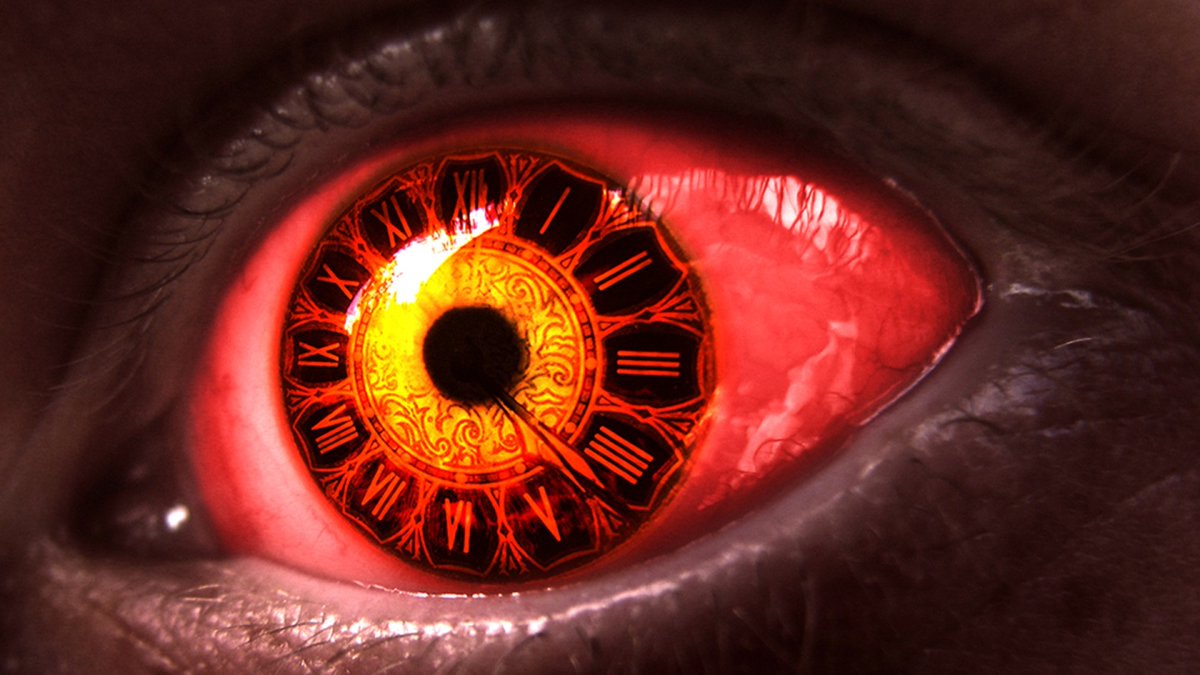
Recently, doctors reported a new case of hemolacria. This syndrome is expressed in the discharge of blood from the eyes. It is quite rare – over the past 20 years, about a dozen people have encountered it.
Indian doctors from New Delhi talked about how a girl was admitted to their clinic at the age of 11.According to her mother, the girl shed bloody tears for a week. The girl did not experience pain or other unpleasant sensations. Ophthalmologists examined the patient, conducted a large number of studies, but could not establish the cause of the bloody tears. The girl was not sick with anything, no deviations, except for the very fact of blood from the eyes, could not be found.
Usually, doctors explain bloody tears in teenage girls by the formation of the menstrual cycle. But this reason did not fit in this case, because the girl had not yet started her period.
The patient spent two days in the hospital, during which she periodically bled from her eyes. As a result, the girl was discharged, telling her mother that the bloody tears would stop the same way they began. This is indicated by all the previous cases.
However, if in women the cause of bloody tears is most likely associated with hormones, then in men the picture is somewhat different. So, in 2018, during an examination of an elderly Italian, doctors discovered benign tumors in the eyes and hyperemia.Medications for hypertension and glaucoma helped, and the eyes stopped bleeding. However, other patients have been crying bloody tears for years, and specialists can only shrug their shoulders.
Source: RIA Novosti.
Hemorrhage in the eye – types, causes and treatment in Moscow
Hemorrhage in the eye is an accumulation of blood poured into the intraocular environment from damaged intraocular vessels due to injury, disease or excessive physical exertion.
Many people think that with a hemorrhage in the eye there is no reason to see a doctor, because the reason is quite harmless. But this is only partly true. Of course, almost everyone has encountered minor hemorrhages at least once in their life, when the cause of this short but very unpleasant phenomenon (subconjunctival hemorrhage or hemorrhage in the sclera) was a slight eye contusion or excessive physical exertion. It is in this case that the hemorrhage is really not dangerous. However, there are also more serious situations when hemorrhage in the eye requires immediate professional help in order to avoid visual impairment or complete loss of vision.
Causes of bleeding in the eye
Hemorrhages in the eye are usually subdivided according to the place of their localization:
- retinal
- in the vitreous body
- to front camera
- in the eye socket
The reasons why hemorrhages occur are very different and varied. In this case, the most common risk factor is blunt trauma (contusion) of the eye. The impact can be directed both directly to the eye and to other parts of the body (skull, neck, chest).Eye injuries sustained in this way are divided into:
- Lungs, in which the structure of the organ remains intact and vision is fully restored.
- Medium, with minor damage to eye structures and possible visual impairment.
- Severe, accompanied by irreversible violations of the structure of the eye, sometimes with complete loss of vision.
At the same time, the degree of damage in case of eye trauma sometimes does not correspond to the amount of hemorrhage.Therefore, in order to prevent undesirable consequences and complications, even with a small hemorrhage, it is imperative to consult a doctor.
Another cause of bleeding in the eye is a disturbance in the circulatory system. They can be caused by diabetes mellitus, vascular atherosclerosis, arterial hypertension. In this case, the treatment of hemorrhage is carried out in parallel with the therapy of the disease that caused it.
In this case, the treatment of hemorrhage is carried out in parallel with the therapy of the disease that caused it.
Atherosclerosis and hypertension are accompanied by deterioration of elasticity and increased fragility of blood vessels, narrowing of arteries and varicose veins.In this case, their ruptures often occur, due to sharp rises in blood pressure. With advanced forms of diabetes mellitus, damage to the blood vessels of the body (angiopathy) and retinal vessels, as well, occurs. A similar condition in ophthalmology is called diabetic retinopathy. The pathology is very serious, since it is very often complicated by hemorrhages in the retina, which can provoke its detachment with irreversible loss of vision.
Other, somewhat less common causes of hemorrhage in the eye, experts refer:
- Intraocular tumors that exert excessive pressure on blood vessels, leading to rupture;
- Myopia, which causes the formation of dangerous microcracks on the walls of the vessels of the eye;
- Iritis and uveitis – inflammatory diseases of the iris and choroid;
- Abnormalities in the development of the vascular system;
- Excessive physical activity, loud screaming, coughing, etc.
Treatment of bleeding in the eye
The primary task of the physician when detecting hemorrhage in the eye is to stop the resulting bleeding. After that, the patient must undergo laboratory tests – a detailed blood test. Its implementation is necessary for the timely detection of diseases associated with pathologies in the blood coagulation system or in the general circulatory system.
As a rule, blood dissolves spontaneously from the places of accumulations.However, to speed up this process, experts prescribe resorption drugs. It is necessary to understand that each new hemorrhage can significantly slow down the rate of blood outflow from the places of its accumulation in the ocular environment. This situation is especially common in patients with diabetes mellitus. As a rule, with diabetes mellitus, retinal hemorrhages occur. Its treatment is difficult and is accompanied by serious consequences, since the visual receptors located here suffer.So, with extensive hemorrhages in / under the retina, in most cases, they resort to performing an operation – vitrectomy. During the surgical intervention, the vitreous body is partially or completely removed, and then the blood clots accumulated on the retina.
This situation is especially common in patients with diabetes mellitus. As a rule, with diabetes mellitus, retinal hemorrhages occur. Its treatment is difficult and is accompanied by serious consequences, since the visual receptors located here suffer.So, with extensive hemorrhages in / under the retina, in most cases, they resort to performing an operation – vitrectomy. During the surgical intervention, the vitreous body is partially or completely removed, and then the blood clots accumulated on the retina.
As mentioned above, hemorrhage in the eye occurs for various reasons and can be accompanied by consequences of different degrees of danger. Therefore, even with a slight presence of blood in the eye, it is better to immediately consult an ophthalmologist.After all, only timely medical assistance will help prevent possible serious complications.
Blood from the eyes – photos, reasons, treatment, what to do
Home → Home treatment → Organism → Blood
Why is blood from the eyes – causes
The appearance of a pathological process can be observed under the influence of various provoking factors. Main reasons:
- Atherosclerosis. When small capillaries are clogged, microbleeds appear in the organs of vision.
- Physical overvoltage. With prolonged and difficult work in low or high temperatures, the appearance of blood spots is observed. Also, this condition is observed in women after the birth of a child in a natural way.
- Increased pressure. The appearance of a small red spot is observed. If blood flows from the eyes, then the reason is an increase in intraocular pressure.
- Organ damage. If a speck gets into the eye, it can lead to redness.In more serious injuries, blood vessels are damaged. In this case, the blood is abundant. In case of traumatic injury, a scratch appears on the human eye, which leads to hemorrhage.
- Intraocular tumor. If a person has bleeding eyes, he needs to urgently seek help from a doctor, since this symptom must be treated immediately.

If the patient has a hormonal imbalance, this can lead to the appearance of pathology.When foreign agents enter the conjunctiva of the eye, this symptom appears. If the eye is swollen with blood, an urgent medical examination is necessary. Hemolacria (discharge of blood with tears) can occur against the background of diseases of the cardiovascular system.
Important! There are many reasons for hemorrhage. Only an ophthalmologist can determine why the pathological process has developed. That is why, if blood starts to flow, the patient needs to see a specialist.
Types of hemorrhage
Medical professionals distinguish several types of bleeding in accordance with the characteristics of the pathological process:
- The patient not only has an eye filled with blood, but also damaged external tissues.In this situation, the patient needs emergency medication. Otherwise, it will be necessary to use surgical intervention.
- Blood appears on the mucous membrane of the eye, as well as on its iris. In this case, glaucoma and other organ diseases become the cause of the pathology. Also, the pathological process develops against the background of mechanical damage to tissues and blood vessels.
- The retina is the place of localization of pathology. This is a rather dangerous condition, with the appearance of which you do not need to do anything on your own.Manifested by visual impairment. It is necessary for the victim to call an ambulance.
Important! Blood from the eye is not only negatively reflected on the appearance of a person, but also significantly reduces vision. That is why when this symptom appears, the patient needs to undergo diagnostics and a course of treatment
First aid – what to do
If bleeding from the eye appears, anyone should know what to do. The victim must be provided with first aid, which will eliminate the possibility of significant blood loss.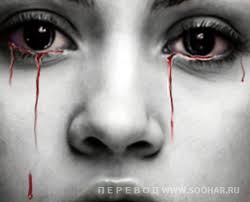 If spotting appears from both eyes, a person should definitely consult a doctor. If, against the background of this, the patient began to see poorly, an ophthalmologist’s consultation is required.
If spotting appears from both eyes, a person should definitely consult a doctor. If, against the background of this, the patient began to see poorly, an ophthalmologist’s consultation is required.
In such a situation, it is strictly forbidden to rub your eyes, as this can lead to increased bleeding. The use of contact lenses during this period is strictly prohibited.
It is not recommended to independently remove bleeding using eye drops without consulting a doctor, as this can aggravate the situation.
If the patient is taking medications that are aimed at thinning the blood, the ophthalmologist should be told about this.
Important! Blood from the eye and nose is a dangerous condition that requires seeking medical attention.
Treatment
Therapy of pathology directly depends on the causes. To treat bleeding, conservative methods, surgery, and traditional medicine can be used.
If there are no chronic diseases in the human body, then the blood is absorbed independently.To determine the causes of the pathological condition, the patient is recommended to take a blood test, an ophthalmological examination.
If the eyes are filled with blood, the treatment of the pathology should consist in taking medications that ensure its resorption, outflow and dilution.
To speed up the healing process, vitamins are required, which can be administered orally or by injection. If necessary, enzymes are administered to patients. Treatment is carried out with the help of hemostatic drugs, as well as drugs, the action of which is aimed at improving elasticity and strengthening blood vessels.
Minimally invasive methods of treatment are recommended for therapy. The most commonly used laser coagulation. For the manipulation, a laser is used, with the help of which the affected vessels are cauterized. This method is necessary to repair the damaged retina.
Treatment of pathology can be carried out with the help of injections of medicines, due to which pathological vessels in the retina stop growing.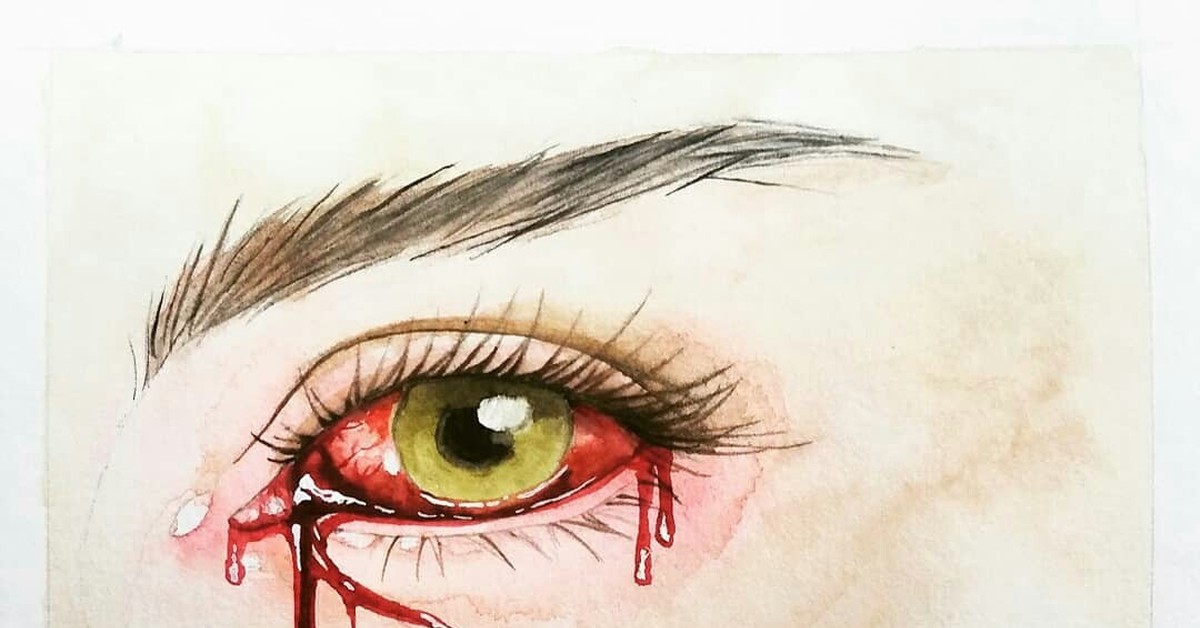 This therapy is highly effective for people diagnosed with diabetes mellitus.Simultaneous use with laser photocoagulation is allowed.
This therapy is highly effective for people diagnosed with diabetes mellitus.Simultaneous use with laser photocoagulation is allowed.
To speed up the treatment of pathology, the use of traditional medicine is recommended:
- To relieve puffiness around the eyes, it is recommended to apply ice for 1 minute. After that, a 15-minute break is taken and the manipulation is repeated again.
- In the presence of a capillary mesh, the use of special lotions is recommended. A good effect is the juice of raw cabbage. A cotton swab should be moistened in it and applied to a closed eye for 30 minutes.The procedure should be performed twice a day. The duration of the course of treatment is determined by the patient’s condition. After resorption of the hematoma, therapy is discontinued.
- Willow has a similar effect. For lotions, it is recommended to prepare a decoction based on the young branches of this plant.
Traditional medicines are less effective than medicines. Sometimes they make things worse. Can only be used as directed by an ophthalmologist.
Hemorrhage into the organs of vision is an unpleasant pathological process that negatively affects a person’s appearance.When bleeding occurs, the patient should consult a doctor who will prescribe rational treatment aimed at eliminating the provoking factor and blood resorption.
Hemorrhage in the eye: causes and treatment, what to do with bleeding
The term hemorrhage in the eye combines a number of pathological conditions that are characterized by the release of blood into the tissue.
The severity of changes and the severity of functional disorders depend on the localization, which is the basis of the modern classification and influences the choice of treatment tactics.The causes of eye disorders are also taken into account.
Answers from ophthalmologists to all questions, including information on how to remove a bruise in the eye, can be obtained at the doctor’s office.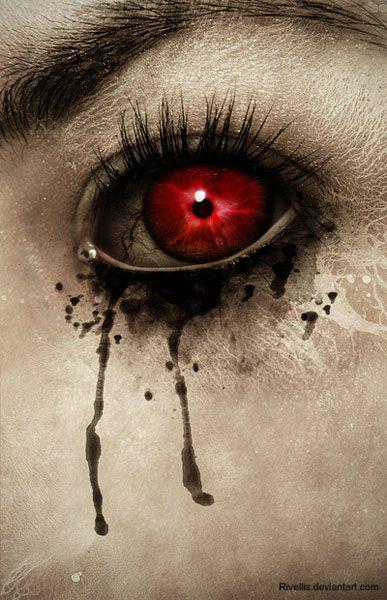
Modern classification
The division of bleeding into the eye into types is based on the location of the damaged vessel and the release of blood into the eye tissue. It includes the following types:
- hyposhagmus;
- hyphema;
- hemophthalmos;
- ingestion of blood into the retina.
Hyposhagmus
The spot has various sizes and shapes.
Hemorrhage into the white of the eye is characterized by the fact that it is clearly visible as a red spot in the conjunctiva. After a hemorrhage in the sclera of the eye has been established, the ophthalmologist determines the causes and treatment individually.
Hyphema
The ingress of blood into the anterior chamber of the eye may be of traumatic or pathological origin. It is divided into several degrees of severity, which are determined by the blood level:
- 1 degree – the chamber is about 30% full, the pupil is fully visible.
- 2nd degree – the filling reaches 50%, the upper blood level reaches half of the pupil, in the prone position, vision deteriorates sharply, up to complete absence (a person can only determine the light source).
- 3 degree – blood filling reaches 75%, the pupil is completely hidden.
- 4th degree – the entire volume of the anterior chamber of the eye is filled with blood.
Treatment is conservative or surgical.
Hemophthalmus
The presence of blood in the vitreous body (sometimes called hemorrhage in the eyeball) is due to the effects of various injuries or diseases. It is possible to suspect a pathological condition by a subjective sensation in a patient who complains of the appearance of a “red veil” in front of his eyes. It is impossible to see bleeding into the vitreous with a simple eye.
Hemorrhage into the retina
The retina refers to the receptor part of the eye. It is localized behind the vitreous body and includes specific cells, which, in response to exposure to light, react with the formation of a nerve impulse. Depending on the shape and localization, several types of hemorrhage are distinguished:
It is localized behind the vitreous body and includes specific cells, which, in response to exposure to light, react with the formation of a nerve impulse. Depending on the shape and localization, several types of hemorrhage are distinguished:
- Striated form is a slight change with blood on the retina, which is localized in the thickness.
- Round shape – the lesions have a clear round shape, they are localized in the depth of the retina.
- Preretinal hemorrhage of the eye – the change is located in the space between the vitreous humor and the retina, it can have different shapes and sizes.
- Subretinal view – blood is localized under the retina directly in the area of blood vessels.
It is impossible to visually see how the eyes bleed into the retina. The patient usually complains of a sharp deterioration in vision. The diagnosis is established after a detailed examination by an ophthalmologist. He also finds out from what the violation occurs. Then conservative therapy is prescribed, and if necessary, laser coagulation is performed.
Hemorrhage in the retina and other structures of the eye – symptoms
Clinical symptoms of hemorrhage in the eye, regardless of its location, include subjective sensations associated with complaints of visual impairment:
- the appearance of a red veil before the eyes;
- photopsia – small point “flashes” of light that appear at the periphery of the field of view;
- “thin cobweb” or “flies” that appear at the periphery of the visual fields and “escape” when trying to focus on them;
- decrease in visual acuity of varying severity.With pronounced changes, object vision is lost. In this case, a person can only determine the source of bright light.
Also, the clinical picture includes visual changes that can only be seen in certain types:
- the appearance of a red spot in the area of proteins around the iris – a sign of blood under the conjunctiva;
- The horizontal level of red fluid in the corneal region, which is visible when the human body is upright, is a sign of blood entering the anterior chamber of the eye.

Causes of hemorrhage in the eye
Hemorrhage in the eye is a polyetiological condition. This means that it develops as a result of the impact of a large number of different causal factors, which include:
- Post-injury – eye contusion, foreign objects, friction.
- Carrying out surgery on various structures of the eye.
- Eye contact with various aggressive chemical compounds.
- Violation of hemodynamics, accompanied by an increase or decrease in blood pressure (hemorrhage in the eye and pressure often accompany each other).
- Decrease in the strength of the walls of blood vessels due to metabolic disorders (angiopathy against the background of diabetes mellitus), systemic inflammatory pathology of the connective tissue, some infections (leptospirosis, severe flu).
- Blood clotting disorders caused by various pathological conditions (insufficient amount of vitamin K, impaired liver function).
- Diseases affecting various structures of the eyeball – tumor processes, blockage of retinal veins by a thrombus against the background of an inflammatory process, hemorrhagic conjunctivitis (the cause of subconjunctival hemorrhage), inflammation of the internal structures of the eye, retinal detachment, age-related degeneration of the vitreous body.
- Chronic intoxication (alcohol abuse, smoking, long-term use of various drugs).
- Increased blood clotting, leading to intravascular thrombus formation with subsequent occlusion of blood vessels.
- Increased intracranial pressure.
- Atherosclerosis is a metabolic disorder accompanied by an increase in the level of cholesterol in the blood with its subsequent deposition on the walls of arterial vessels.
- Hereditary predisposition – features of blood circulation, the state of the walls of blood vessels, the functioning of the blood coagulation system are inherited. In such cases, it may seem that the pathology has developed for no reason.

If there is a major change, causes and treatment are urgently determined.Research is aimed at elucidating the provoking factor for the subsequent selection of an adequate treatment.
Hemorrhage in the eye – diagnosis
Diagnostic measures are aimed at establishing the cause of changes, their localization, type and severity. These include several common examinations:
- visual inspection;
- ophthalmoscopy – visual examination of the fundus using a special optical device;
- perimetry – examination of visual fields;
- visiometry – determination of visual acuity;
- Computed tomography – X-ray examination with high separation power.
After the diagnosis of the pathology, the causes and consequences are established based on the research results.
Treatment of hemorrhage in the eye
Treatment is prescribed complex. It includes several main areas of measures that are affected by the cause of the change in the eye:
- General recommendations – rationalizing work and rest, ensuring adequate sleep, increasing physical activity, giving up bad habits (in more detail on how to strengthen blood vessels eye hemorrhage, using general recommendations, usually informs the doctor at the reception).
- Diet – restriction in the diet of fatty, fried foods, ensuring the supply of vitamins, proteins, which is necessary to improve the state of blood vessels.
- Drug treatment – various anti-inflammatory drugs are used (dexamethasone has a pronounced effect, since it is a derivative of glucocorticosteroid hormones), angioprotectors (, trental), diuretics (furosemide), antioxidants (vitamin E). The field of how the hemorrhage was established in the eye, how to treat the pathology, the doctor determines individually.
- Invasive manipulations – excision of tissues with hemorrhage, which is performed using a laser, paracentesis of the anterior chamber of the eye in case of hemorrhage (puncture of the anterior chamber to remove blood).

Traditional methods of therapy
Traditional methods involve the use of medicinal plants in the form of tinctures. These include sophora, arnica. Before treating bleeding in the eye with folk remedies, you need to consult a doctor.
Features in newborns and children
Hemorrhage in the eye in newborns is relatively common.The main reasons are difficult labor with a vacuum extractor or forceps. If there is a release of blood into the sclera of the eye, the treatment in most cases is conservative.
Prevention
It is important to be able to prevent changes in the eye. What to do for this, you can ask your ophthalmologist. Preventive measures are aimed at eliminating the impact of provoking factors.
The author of the article: Igor Mikhailovich Krivoguz, specialist for the glazalik website.ruShare your experience and opinion in x.
Hemorrhage in the eye: causes and treatment, what to do in case of bleeding Link to main publication
The eye is bloody – causes, photos, treatment
Subsonjunctival hemorrhage
Eye bleeding (subconjunctival hemorrhage) is a hemorrhage in the front of the eyeball. It can lead to reddening of the eye or even accumulation of blood on the front of the eye between the transparent cornea and the colored iris.
Bloodshot eyes usually result from damage to a blood vessel. In severe cases, the same cause that damaged a small blood vessel can lead to other intraocular damage: lens displacement, traumatic cataract, perforation of the eyeball, vitreous hemorrhage, retinal detachment and optic nerve atrophy.
Causes
Hemorrhage is most often caused by trauma, such as being hit by a blunt object or something sharp.Other causes of blood flow to the eye include blood vessel malformations, eye cancer, or severe inflammation of the inside of the eye.
Common causes
- Blood thinners
- Choking attacks
- Severe vomiting
- Heavy lifting
- Hypertension (high blood pressure)
- Sneezing or coughing, especially if it is prolonged or painful
Damaged blood vessel
There are many factors that cause damage to the blood vessels in the eyes, which can cause them to become bloodshot. Some of these factors are:
Some of these factors are:
- Violent sneezing, coughing or vomiting will rupture blood vessels. These symptoms may be accompanied by severe vomiting.
- Strenuous physical activity, such as lifting heavy weights, can rupture the blood vessels in the eyes due to the increased pressure after exertion. Due to the high pressure in the head vessels, small capillaries rupture.
- Eye injury.
- Contact lenses can irritate the eyes, especially if chafing occurs.This can lead to rupture of blood vessels.
- A sudden rise in blood pressure from minor trauma can rupture the capillaries, causing bleeding in the eyes.
- Eye infections can damage blood vessels.
- Eye surgery can also affect the blood vessels in the eye and cause infection.
- Diabetes or blood clotting problems are known for their effects on blood vessels.
- If you are prone to high blood pressure in general, and if you are frequently stressed, this may be the cause of rupture of blood vessels in the eyes.
- In addition, if you take blood thinners or any other medication that affects blood flow, they can also damage your blood vessels. Even high doses of aspirin can have this effect.
The eye is bleeding from an injury
The eye is bloody and sore
If the bleeding is painful, it is most likely due to one of the following conditions:
A scratch on the cornea or a speck in the eye
the soreness of the eyes is caused by a speck in the eyes.If she scratches her eye, discomfort may be present. Relief comes after the removal of the foreign body.
Note. You may be prescribed antibiotic eye drops or ointment to reduce your risk of infection.
Iritis (inflammation of the iris) or anterior uveitis (inflammation of the choroid)
These conditions can sometimes be caused by an immune system problem or infection.
In addition, you may notice that your eyes have become sensitive to light, the image is blurry and your head hurts.
Acute glaucoma
This is a serious condition in which pressure in the eye suddenly increases and there is intense redness and soreness. Vision can be blurry and cloudy.
Corneal ulcer
Usually caused by a bacterial or viral infection, and can cause the eye to turn red and sensitive to light, or to feel like there is something in the eye. Bacterial corneal ulcers are commonly seen in people who wear contact lenses.
Bladder in the eye
Bladder in the eye is also known as subconjunctival hemorrhage. Its appearance can cause concern, however, it is not a serious problem.
Although the source may not always be identified, some potential causes of subconjunctival bleeding include:
- Eye trauma
- An unexpected increase in blood pressure that can be caused by heavy lifting, coughing, sneezing, laughing, and constipation
- Blood thinners such as as aspirin (acetylsalicylic acid) and warfarin
- Rarely, a blood clotting disorder or vitamin K deficiency (it helps the proteins necessary for blood clotting work properly)
- Eye surgery, including laser vision correction and cataract removal
Note .If you do not have any of the above reasons, but the hemorrhage recurs, you should see a doctor to make sure that there is no problem with the eyeball, high blood pressure or circulatory problems.
During pregnancy
Sometimes, during pregnancy, there may be a problem with eye bleeding, but do not worry, as after childbirth it will go away on its own. Some of the common problems may include:
Dry eyes
Hormonal changes cause the body to produce fewer tears, so the eyes dry out, leading to irritation, redness, and sensitivity to light.
In order to alleviate your condition, you need to minimize the time spent in front of a computer or TV screen, avoid exposure to the light of fluorescent lamps, stop using contact lenses, and also control the humidity in the room.
Visual impairment
During pregnancy, corneal edema occurs, therefore, temporary discomfort from contact lenses, as well as decreased vision, is possible. This case does not need treatment; after childbirth, vision will return to normal.
Treatment
Most often, no treatment is needed unless the condition is caused by injury or infection. The blood in the eye will disappear on its own after a few days or a couple of weeks, depending on the amount. To accelerate this, drops from the “artificial tear” category can be applied up to 6 times a day. But it is important to rule out serious causes, especially if the situation repeats itself.
General diagnostic tests and procedures include:
- CBC to determine platelet count
- Blood chemistry to measure total serum protein
- Coagulopathy tests to assess blood clotting functions
- Blood pressure
- Urinalysis to rule out disease Kidney
- Chest and abdominal X-ray
Ultrasound diagnostics (US) to examine the anterior part of the eye and confirm / rule out the possibility of retinal detachment, lens displacement, abnormal neoplasms and vitreous hemorrhage.
Loading …
Hemorrhage in the eye: causes and treatment
Hemorrhage in the eye is a fairly common phenomenon, the cause of which is a violation of the vascular wall of the eyes. This is an accumulation of blood poured out of the blood vessels that filled the cavity of the eyeball, as well as the surrounding tissues.
This phenomenon is most often found in pathological conditions: diseases or injuries. Hemorrhage can be observed in the anterior chamber of the eye, in the vitreous humor of the eyeball, as well as in the retina on its posterior wall and directly into the orbit.
Retinal hemorrhage looks like a bright red spot on the surface of the eyeball. The person usually does not experience any pain. He may sometimes feel a pain, as if a foreign body had gotten into it, and also complain that visual acuity is decreasing.
There are no harmless hemorrhages. Only specialists from microsurgery and ophthalmology can diagnose and cure an ailment.
Localization of hemorrhage and its symptoms
Usually, apart from a strong local redness of the orbit, there are no other symptoms.Rarely, when a large vessel is damaged, a painful sensation appears. With extensive hemorrhage, a feeling of pressure appears. The area of the outpouring itself has a bright red color, clear boundaries. With extensive effusions, blood spreads to the entire tunica albuginea.
There are several types of damage to small blood vessels, each with specific symptoms. Depending on the location of the damaged vessel, there are:
- Hyphema – accumulations of blood in the anterior chamber of the membrane – between the cornea and the iris.It is usually the result of blunt trauma. It is accompanied by a pronounced pain symptom, blurred vision.
Has the appearance of a uniform red formation with smooth contours. Blood can spread over the entire cavity of the anterior chamber if a person is in a horizontal position, or settle if a person is in an upright position.
With this type of intraocular hemorrhage, vision is not distorted, except when the hyphema completely closes the pupil.Blood clots with hemorrhage in the anterior chamber dissolve quickly, literally in a few days.
- Hemophthalmus is a hemorrhage that occurs inside the vitreous body. Usually appears as a result of damage to the vascular membranes. It looks like a brown formation located just behind the lens. This is a severe lesion of the eyeball.
There are two types of hemophthalmos: complete – leading to loss of vision; partial – capable of causing a significant loss of visual acuity as a result of a complication.The main symptoms of vitreous hemorrhage are flashes of light in front of the eyes, dark mobile spots that bother a person, as well as pronounced fog in front of the eye.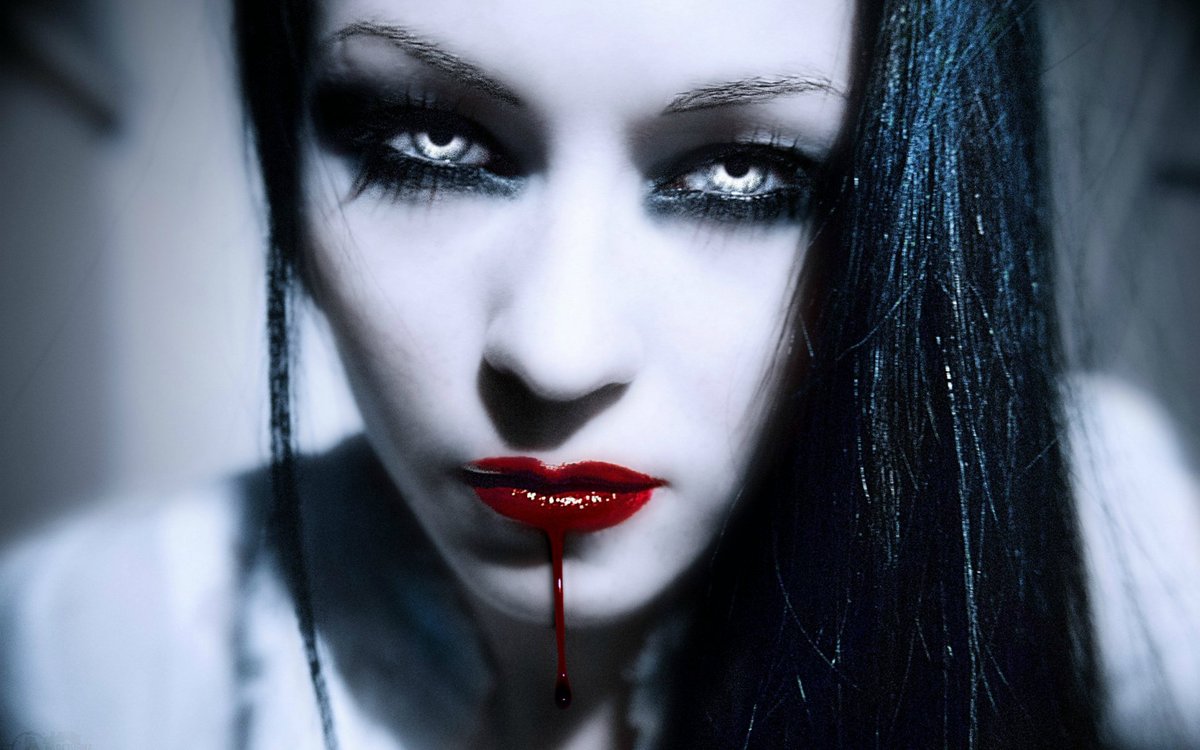
- Subconjunctival hemorrhage. The vessels of the mucous membrane are damaged. Are spontaneous, develop for no apparent reason. Outwardly, it looks like a crimson spot on the eyeball, which does not disappear for several days. This is the only symptom of the disease. Visual impairment, painful sensations are not observed.
Occurs usually as a result of concussion of the apple’s orbit. Sometimes pathology occurs with blood diseases and vasculitis. The symptom is pronounced bulging with a sharp forward displacement of the eyeball, which greatly limits the ocular motor function. There is also hemorrhage under the skin of the eyelids and conjunctiva, decreased visual acuity.
- Retinal hemorrhage. It develops as a result of bleeding from the vessels of the retina. The retinal tissue is very sensitive and thin.Therefore, even minor damage to blood vessels can lead to significant loss of vision, the development of retinopathy.
Outwardly, the pathology is almost invisible, regardless of the extent to which retinal tissues are involved. A person usually complains about a lack of sharpness of objects, objects in front of his eyes, a grid that shifts when moving in orbits, as well as the appearance of floating flies. Extensive blood clots in the retina can lead to complete loss of vision.
Causes of bleeding in the eye: from injuries to diseases
The most common cause of bleeding is trauma to the visual organs.The cause of damage can be a blow to the eye, a blow to the head, trunk injuries, injuries in the sternum. Even minor bruises can lead to severe tissue changes.
- But this does not always happen with injuries, often this phenomenon is provoked by diseases of internal organs and systems.
- This condition can manifest itself due to the destruction of the vascular wall, circulatory disorders: with damage to the vascular walls by atherosclerotic plaques, with microaneurysms, narrowing of the vascular walls; with the onset of pathological fragility of blood vessels or as a result of increasing their permeability.

- Excessive physical activity sometimes leads to the appearance of intraocular hemorrhage.
- Even a cough, a strong cry can become the cause.
- Atherosclerosis, increased blood pressure can cause narrowing of the lumen of the arteries and retinal angiopathy, provoke fragility of blood vessels.
Diabetes mellitus is one of the causes of hemorrhage in the eye. It is capable of causing changes in the retinal vessels. The vascular wall becomes weaker, microaneurysms appear on its surface, leading to intraocular outflow of blood.
The cause of the manifestation of pathology can be mechanical compression of the eye vessels under the influence of a growing tumor inside the eye, as well as various inflammatory processes occurring in the iris, myopia.
Blood in the eye often occurs with increased cardiac loads, as well as with the onset of attempts in parturient women.
Correct timely determination of the cause of the phenomenon makes it possible to preserve human health. When the first obvious symptoms appear, you should immediately contact a specialist.
When to see a doctor urgently
It is worth seeing a doctor immediately when:
- hemorrhage occurred simultaneously in two eyes at once;
- sudden loss of vision in one or two orbits of the eye;
- Heavy fog in front of the eye;
- hemorrhage is accompanied by pain and decreased vision;
- blood effusion was the result of an injury to the eyeball;
- are taking blood thinners.
Treatment is the work of the doctor, not the victim
Various causes of blood effusion, its localization and severity, adverse consequences, the worst of which is loss of vision, suggest that urgent consultation with a specialist is needed.
It is a quick diagnosis, timely prescription of therapy that are the first aid in case of a disease. The basis for eliminating the consequences of pathology is rest and performing procedures. It is recommended to isolate the eye from environmental influences using an aseptic dressing.
It is recommended to isolate the eye from environmental influences using an aseptic dressing.
The main diagnostic method is ophthalmoscopy – examination of the fundus. If a hemorrhage occurs in the orbit, additional diagnostic measures are carried out – MRI, CT, X-ray of the skull, which makes it possible to judge possible complications.
The disease is treated with medications, surgery and vitamins. So, ophthalmologists prescribe the following measures:
- the introduction of vitamins intramuscularly;
- oral intake of vitamins: calcium chloride solution and ascorutin;
- intravenous administration of lidazo and glucose, which help to resolve infiltrates and blood effusions in the visual organs;
- introduction of protease enzymes.
Surgical intervention: vitrectomy surgery, laser correction is performed in case of damage to the vitreous body or retina.It is used for extensive blood effusion. Its implementation involves the removal of thickened blood from the eye cavity. Clouded areas of the vitreous body, areas of the posterior hyaloid membrane are also removed.
Special medications are prescribed to the patient for the speedy resorption of blood.
- Hyphema. No specific treatment is required. The doctor prescribes drops of potassium iodide 3% externally 3 times daily for a week. The persistence of hyphema for more than 10 days, especially in elderly patients, is an indication for surgical removal of blood clots, since it indicates the development of future serious complications: glaucoma, uveitis, cataracts.
In the event of an illness, it is recommended to avoid taking anti-inflammatory nonsteroidal drugs NSAIDs in any form, anticoagulants, as they disrupt the blood coagulation ability.
Albucid, taufon, emoxipin are prescribed for the treatment of hyphema. Vitamin therapy is important. Useful of vitamin P and ascorbic acid. To strengthen the vascular wall, the drug ascorutin can be prescribed, which includes both of these vitamins. It is recommended to use vitamin C, which increases the elasticity of the vascular walls.
It is recommended to use vitamin C, which increases the elasticity of the vascular walls.
- Hemophthalmos. With the onset of hemophthalmos, you should immediately seek help from medical institutions, since this is a serious illness. Only the urgent help of a doctor will help the patient to preserve his vision. When blood is poured into the retinal tissue, the patient is recommended complete rest.
For treatment, the doctor prescribes to the patient drugs that strengthen blood vessels, hemostatic agents. If the retinal effusion is extensive, the patient requires urgent hospitalization.
If after the release of blood from the vessels, the hematoma manifests itself in the form of glasses, which indicates the filling of the eyelids with blood, the patient needs hospitalization.Such a hematoma indicates damage to the base of the skull. To prevent the development of such effusions, experts recommend taking vitamin C, which softens the walls of blood vessels, making them elastic.
Treatment with folk remedies
Together with traditional medicine for the treatment of pathology, traditional medicine is used to help speed up the healing process. Traditional medicines only help to alleviate the symptoms, however, they will not be effective in severe cases of hemorrhage.For these purposes, recipes are used to help relieve symptoms and alleviate the condition.
So, chamomile decoction, boiled and chopped cabbage leaves and aloe juice are used for compresses. Lotions are also made with saffron, radish peel, fresh cheese, and lentil oil to relieve symptoms. The duration of the procedure is 5 minutes.
Remember! Traditional medicine is powerless in severe illness. Frequent hemorrhages with extensive damage to the tissues of the eyeball, especially if it is associated with a head injury, are a serious reason for contacting specialists: a therapist, an ophthalmologist.
Prevention is as simple as twice two
There are no specific measures to prevent the development of bleeding into the eye. Preventive measures are different, they all boil down to strengthening the immune system as a whole, since the state of blood vessels and various diseases, such as hypertension or diabetes mellitus, are the consequences of an improper lifestyle.
Preventive measures are different, they all boil down to strengthening the immune system as a whole, since the state of blood vessels and various diseases, such as hypertension or diabetes mellitus, are the consequences of an improper lifestyle.
A healthy lifestyle, taking vitamins is an excellent prevention of disease.
Treatment of the underlying ailment can prevent the development of complications in the form of blood effusion.
Hemorrhage in the eye – causes and treatment of bruising in the retina, how and how to treat it if the eyeball is in the blood, from which occurs
A fairly common non-infectious lesion of the visual organs is characterized by hemorrhage in any area of the eye. In some cases, minor hemorrhages of a traumatic nature do not entail any negative consequences, but in some cases this symptom may indicate a severe pathology that can result in complete blindness.
Symptom definition
Some ocular hemorrhages are visible visually. They are easy to spot by looking in the mirror. Other disorders of the vascular system of the eye can only be detected during a medical examination.
Visually determined hemorrhage behind the cornea and damage to the blood vessels of the white of the eye.
In the first case, blood fills the anterior chamber of the eyeball, while it can overlap the iris and, partially, the pupil, which limits the field of view.
Scleral hemorrhages look like small red spots that are clearly visible. In some cases, extensive hemorrhage may occur in the entire visible area of the white of the eye. Despite the frightening appearance, subconjunctival hemorrhage does not entail any serious consequences and gradually resolves on its own.
Vitreous or retinal hemorrhage is not visually detectable and can only be detected upon examination by an ophthalmologist.
If you find large hemorrhages on the iris or sclera of the eye, you should consult an ophthalmologist, especially if you have painful sensations.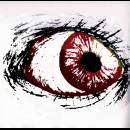
Causes of occurrence
There are several types of damage to the blood vessels of the eye:
Hemorrhage between the cornea and the iris is called hyphema. With this pathology, blood fills the anterior chamber of the eye. Most often, such a hemorrhage occurs as a result of trauma or ophthalmic surgery.
Less commonly, the cause of this disorder is herpes, a bleeding disorder or cancer.
In this case, you can visually observe the blood behind the cornea, in addition, the patient experiences painful sensations in the eyeball.
Subconjunctival hemorrhage is clearly visible on the white mucous membrane of the eye. It occurs due to the destruction of blood vessels.
Quite often, tiny capillaries burst from physical exertion of the body.This can happen while sneezing, with violent and prolonged bouts of coughing, or when doing hard work.
Injury and damage to the eye also cause hemorrhages in the eye.
Vitreous hemorrhage can only be detected by an ophthalmologist during diagnostic procedures.
Since the vitreous body itself does not have a circulatory system, blood enters it when the retinal vessels are destroyed. There can be several reasons for this pathology:
When blood gets into the vitreous body, the patient can observe a slight haze in the field of view, formations in the form of a cobweb and a reddish tint in the observed objects.In severe cases, severe visual impairment, up to complete blindness, is possible.
The retina is lined with a large number of blood vessels that can rupture and cause hemorrhage.
Among the reasons that can provoke this violation, the most common are the following:
- hypertension;
- vascular dilatation associated with aneurysm;
- eyeball trauma;
- craniocerebral injuries;
- strong changes in atmospheric pressure.
High blood pressure is a very common reason why capillaries in the eyes burst. Vascular aneurysms and thrombosis can also cause destruction of the blood vessel and retinal hemorrhage.
Vascular aneurysms and thrombosis can also cause destruction of the blood vessel and retinal hemorrhage.
Eye injuries and craniocerebral disorders are necessarily accompanied by intraocular bleeding.
Dangerous retinal hemorrhages occur in professional divers, but most often in inexperienced divers who do not observe the decompression mode when ascending from depth.
Do not scratch or rub your eyes if there is a noticeable hemorrhage.
Possible diseases
There are certain diseases that can provoke eye hemorrhages. There are quite a few of them:
Tumors that have arisen on the eyeball or the internal structures of the eye can deform the blood vessels, which leads to their destruction.
Diseases of the iris and vascular inflammation, in some cases leads to thinning of the capillary walls.The vessel loses its elasticity and bursts.
Increased blood pressure in hypertension, atherosclerosis and diabetes mellitus are common causes of intraocular hemorrhage.
Tumors that have arisen on the eyeball
Therefore, when diagnosing such a pathology, doctors of other specializations can be involved in the treatment of a patient to treat the underlying disease.
You should not self-medicate and change your doctor’s prescription or stop an early prescribed course of treatment.
Diagnostic methods
In order to correctly assess the nature of intraocular hemorrhage, the ophthalmologist uses the most modern diagnostic tools. These include:
- ophthalmoscopy;
- ultrasound examination;
- dopplerography;
- angiography;
During ophthalmoscopy, through the dilated pupil, the retina and the vascular system of the fundus are examined. Ultrasound diagnostics is indispensable for localizing and determining the nature of the emerging tumor.
Doppler ultrasound allows you to assess the blood flow rate in the vessels of the eye and the patency of the vessels. Angiography enables the ophthalmologist to examine the vascular system of the retina, down to the smallest capillaries.
Angiography enables the ophthalmologist to examine the vascular system of the retina, down to the smallest capillaries.
For this, a contrast agent is injected intravenously to the patient, which allows you to get a complete picture of the entire vascular system.
Conducting an ultrasound examination of the eyes
Treatment
The choice of treatment for ocular hemorrhage depends on its cause.Small hemorrhages between the cornea and the iris (stages I-III) do not require special treatment.
Instillation of corticosteroids and atropine into the damaged eye is allowed.
Stage 4 hyphemas may require surgery to remove blood clots that can cause an increase in intraocular pressure.
In case of subconjunctival hemorrhage, no treatment is required, but if it occupies the entire area of the lining of the eye, see a doctor.Usually, the following medicinal products are used to prevent hemorrhage:
- vitamin complexes in the form of capsules or injections;
- intravenous glucose;
- drugs that strengthen the walls of blood vessels;
- Hemostatic preparations
Emoxy-Optic eye drops are used for ocular hemorrhage
Vitreous hemorrhage is determined by certain symptoms and during the diagnostic examination. The ophthalmologist first determines the source of the bleeding.After that, the method of treatment is selected.
Retinal hemorrhage is localized in the same way. Most often, laser coagulation of the damaged vessel is used, while the bleeding stops.
No physical activity is allowed after this procedure so as not to cause new bleeding.
Laser coagulation procedure
In case of ocular hemorrhage, you should immediately stop taking drugs that reduce blood clotting, the most common of which is aspirin.
Prevention
In order to prevent ocular hemorrhage, simple rules should be followed:
- avoid eye injuries and injuries;
- visit an ophthalmologist regularly;
- Get rid of bad habits.

People with high blood pressure and diabetics should constantly monitor their important parameters.
Video
Conclusions
With single hemorrhages of small size, it is enough to give the eyes a long rest, without straining them for a while.If negative symptoms persist for a week or more, then you should definitely consult a doctor.
What is the danger of the destruction of the vitreous body and how it is interconnected with hemophthalmus (hemorrhage), this article will tell.
Purulent eye infection: description of the disease, causes, symptoms, cost of treatment in Moscow
Hundreds of eye diseases are known to ophthalmology. The most common damage to the human eye is a purulent infection. Diseases have similar symptoms and complications, but manifest and are diagnosed in different ways.Also, eye diseases differ in treatment methods.
Purulent formations, most often, are the result of colds. Pathological eye changes can become infectious agents. The appearance of pus can cause contact with dirty hands, a towel, and even bedding. Traumatic effects on the organs of vision can cause purulent lesions.
In ophthalmology, several types of purulent eye infections are distinguished: conjunctivitis, endophthalmitis, panophthalmitis, iridocyclitis.Ophthalmic herpes, fungal keratitis, corneal ulcers, dacryocystitis, blepharitis and barley. These infections cause increased pus production.
A mucous membrane that protects the eye from external influences is formed from the mucous membrane. If a person has a small amount of mucus after sleeping, this is considered normal. It consists of mucin and meibomian gland cells. This is a greasy and slimy secret, so the color of the mucus should be transparent or whitish.
If the discharge is infectious, then the discharge is accompanied by redness, tearing. There is a burning sensation and itching. The amount of mucus secreted increases significantly, the color becomes yellow-green, the consistency thickens. When the first symptoms appear, you should immediately contact an ophthalmologist. It is necessary to establish the cause of the disease, its nature and an effective method of treatment.
There is a burning sensation and itching. The amount of mucus secreted increases significantly, the color becomes yellow-green, the consistency thickens. When the first symptoms appear, you should immediately contact an ophthalmologist. It is necessary to establish the cause of the disease, its nature and an effective method of treatment.
The eye carries a very important function in human life. Thanks to vision, a signal enters our brain, and we visually form a visualization of the surrounding world.Each eye has its own function. Therefore, if even one eye is disturbed, the picture changes.
The structure of the eye consists of the following parts: cornea, eye chamber, iris, pupil, lens. As well as the optic nerve, sclera, blood vessels, retina. Each element is required for the basic functions of the eye.
Conjunctivitis
The disease develops as a result of inflammation of the mucous membrane of the eye. Inflammation of the conjunctiva can be caused by an infection or allergy.There are several types of this infection: allergic, bacterial, acute and chronic. In an adult, conjunctivitis caused by adenovirus is most common. In children, adenovirus and bacterial are equally common.
The appearance of the disease can provoke various infections. All kinds of gonococci, staphylococci, streptococci, Pseudomonas aeruginosa cause bacterial lesions. The development of inflammation in the eye begins with a fungal process.There are a huge number of fungal groups of irritants, for example, aspergillus, actinomycetes, spirotrihel. Medicines, contact lenses, plants, dust can cause an allergic reaction. Sometimes, conjunctivitis can be considered an occupational disease when working conditions are in a polluted environment, the eyes are exposed to external dust and gas.
The general symptoms of the disease have a number of sensations that cannot be overlooked. The eyelids begin to redden, excessive lacrimation appears, pain in the eye, swelling, difficulty in visual function due to the appearance of purulent discharge.
The eyelids begin to redden, excessive lacrimation appears, pain in the eye, swelling, difficulty in visual function due to the appearance of purulent discharge.
At the first manifestations of conjunctivitis, you should seek medical help. Diagnosis of the disease is quick and easy. Visual inspection and a series of studies will determine the cause of the infection. After consulting an ophthalmologist, the most effective treatment method is prescribed. Medication includes a combination of eye drops and antibiotics. With proper and prompt treatment, complete recovery occurs within a few weeks.
Endophthalmitis
A disease that occurs as a result of bacteria in the eye fluid.Infection with endophthalmitis occurs through blood circulation, trauma to the eyeball, surgical intervention. The main cause of the occurrence is postoperative complications for the elimination of cataracts, vitrectomy, glaucoma. The disease is asymptomatic, the patient seeks help when vision deterioration begins, and dark spots of various shapes appear in the eyes, which impede normal vision and eye movement.
It is very difficult to diagnose endophthalmitis in the early stages.Typical symptoms and previous surgical eye interventions become the only suspicion of the development of this pathology.
Treatment of the disease is immediate. Steroid drugs are administered enterally, antifungal agents and antibiotics are applied to the eye cavity. Approximately half of the patients achieve a favorable prognosis of recovery. It depends on the cause caused by endophthalmitis, the age and health of the patients, and visual acuity. These factors affect the receipt of the result and the return of the previous visual acuity.
Panophthalmit
The infection affects the sclera and all membranes of the eye, causing acute purulent inflammation. The cause of the occurrence is the introduction of infection through the eyeball, as well as through the circulatory system. Severe pain is felt in the eye sockets. Edema, fear of light, watery eyes, blurred vision. Chills and fever are common.
Severe pain is felt in the eye sockets. Edema, fear of light, watery eyes, blurred vision. Chills and fever are common.
The inflammation is severe and acute. The disease has severe complications. Often leads to atrophy and death of the eyeball.The infection spreads instantly through the eyelids and lacrimal glands. The multiplication of microorganisms leads to inflammation, panophthalmitis is distributed over the entire surface of the eyeball.
The causative agents of this infection are staphylococci, pneumococci, tuberculosis bacteria, Pseudomonas aeruginosa and Escherichia coli. They enter the ocular cavity exogenously or endogenously. Traumatic impact is the most common type of lesion; a purulent infection penetrates through the wound into the eyeball.Due to past diseases, such as keratitis, abscess of the eyelids, phlegmon of the orbit, endophthalmitis, panophthalmitis may develop. The causative agents of the disease can be pneumonia, typhoid, sinusitis, sepsis, tuberculosis and many other diseases.
A few days after infection, panophthalmitis affects the eyeball. The disease develops rapidly and has acute symptoms. Headache, chills, vomiting. Strong theca, cutting sharp eye pain, an abundant accumulation of pus is observed in the anterior chamber of the eye.Vision drops sharply, a person ceases to distinguish between light and darkness, complete blindness sets in. If the disease spreads and affects the internal tissues, the mobility of the apple becomes impossible. After a couple of months, pus is discharged through the openings of the sclera, the eye is squeezed out and atrophied. Pus can affect the meninges, meningitis develops, as well as an abscess.
Panophthalmitis is diagnosed by an ophthalmologist when examining and assessing the existing injuries of the eyeball.Various types of ophthalmological examinations are prescribed. Timely diagnosis and treatment is the only way to recover.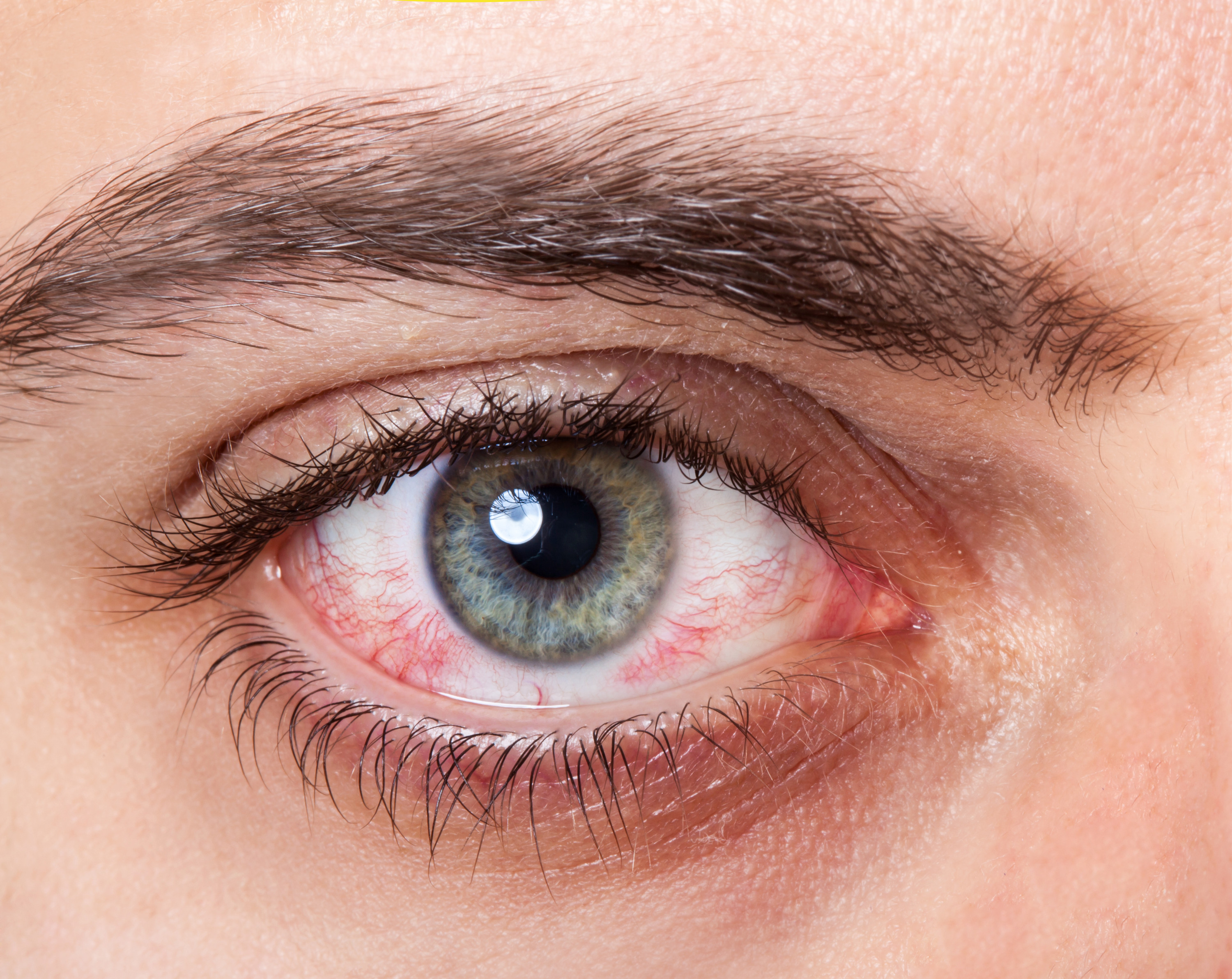 Enhanced antibiotic therapy is prescribed immediately. Antifungal agents are prescribed. Apply trays, special intravenous droppers from salt solutions.
Enhanced antibiotic therapy is prescribed immediately. Antifungal agents are prescribed. Apply trays, special intravenous droppers from salt solutions.
Medication can be powerless. In such cases, the removal of the cornea and the inside of the eyeball is urgently prescribed. Evisceration is used for loss of vision.An implant is sewn into the orbit and the cleaned area is sutured.
Ophthalmic replacement is performed in the absence of an eyeball. An ocular prosthesis can be made of a variety of materials. The prosthesis is first installed in a small size, for the patient to get used to its wearing. The size is gradually increasing. After wear and tear, the denture should be replaced.
Eye Herpes
The disease is caused by the simple herpes virus. Patients of any gender and age are at risk.Small purulent balls appear on the eyelids, which cut the hole, irritate the mucous membrane. There is redness, tearing, fear of light. More than 90% of the population suffers from the herpes virus. Herpes in the eye occurs when the trigeminal nerve is inflamed. Symptoms progress.
Herpes is diagnosed only by laboratory tests. Eye ointments, immunomodulators are prescribed. Eye drops are used to limit damage to healthy tissues. Novocaine blockade will relieve pain and inflammation.
Fungal keratitis
The disease is caused by a virus, bacterium or fungus. The corneal tissue is affected. It is accompanied by pain and redness. The transparency of the cornea deteriorates, there is a spasmodic closure of the eyelid. There are many causes of keratitis, such as trauma, allergic reactions, influenza and SARS. Parasitic fungi attack the cornea, causing severe damage to it. The consequence can be loss of vision or an eyesore.
Endogenous iridocyclitis
Inflammation of the iris and ciliary body.Causes of occurrence: arthritis, gout, psoriasis.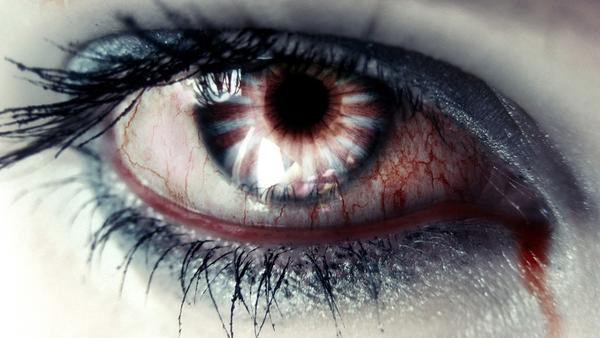 Various infectious diseases that are caused by bacteria. For example, flu, measles, herpes, sinusitis, sinusitis.
Various infectious diseases that are caused by bacteria. For example, flu, measles, herpes, sinusitis, sinusitis.
When the eye is damaged, pain syndrome, lacrimation, photophobia, and decreased vision appear. The blood vessels in the eye dilate. The iris of the eye changes color. Pupils do not react well to light. Bloody and purulent accumulations appear at the bottom of the chamber.
The diagnosis is established according to the patient’s complaints.The eyes are examined using a special microscope. The pupil may be constricted and not naturally shaped. Treatment is prescribed by an ophthalmologist. Antihistamines, corticosteroids, and antibiotics may be indicated.
Barley
Barley can be caused by a tick or bacterial infection. The hair follicle becomes inflamed, and the accumulation of pus begins. Weakened immunity and bacterial infection, stress, skin diseases, anemia, eye contamination, worms can cause barley.
There is redness and swelling of the affected eye. A pimple appears on the basis of the focus, from which yellow pus is released. A rise in body temperature, chills, an increase in lymph nodes accompany the course of the disease.
During a medical examination, a study is carried out for the presence of a skin mite, urine and blood tests are taken, and the sugar level is checked. Treatment of barley begins with the treatment of the abscess with tinctures or alcohol. Antibacterial drops, tetracycline ointment, vitamin therapy to raise immunity are prescribed.
It is strictly forbidden to squeeze out barley. The infection can spread to the entire eyelid. The use of the prescribed funds by an ophthalmologist will lead to complete recovery in a week.
Dacryocystitis
The inflammatory process takes its origin in the lacrimal sac. There is redness and swelling in the lacrimal opening. The pain can be given to the nose and jaw. Purulent discharge comes out from the lacrimal sac.
The pain can be given to the nose and jaw. Purulent discharge comes out from the lacrimal sac.
Dacryocystitis is congenital and acquired.The diagnosis is made by visual examination and analyzes. Antibiotic therapy is selected. Lavage and probing of the lacrimal canals are used. CT or MRI is used to detect neoplasms and changes caused by dacryocystitis. To prescribe an effective treatment, you should find out the cause of the disease. You need to get rid of it at the same time.
Blepharitis
The disease of the eyelids and their edges is called blepharitis. The eyelids change their shape due to swelling, redness is observed, patients often blink.The cause of the occurrence can be various diseases, for example, gastritis, sinusitis, colitis. Allergies, lack of vitamins, infections, are also the cause of the development of the pathological process. This disease is most often chronic. It is difficult to treat.
The bulk of diseases appear due to bacterial damage. Personal hygiene rules should be followed. Always keep your face and hands clean. The use and dosage of any drugs can only be prescribed by an ophthalmologist, based on the examination and research.
Many factors lead to loss of vision and the eyeball itself. In this case, ocular prosthetics are used. The shape of the prosthesis mimics the human eye. It does not transfer the visual function, but maintains the organs of vision in the anatomical position and improves the aesthetic appearance. This is a narrow area in ophthalmology that every clinic cannot afford.
Hemophthalmos: symptoms, diagnosis and treatment
Ophthalmologist, Ophthalmosurgery
Gevorkyan
Armine Seyranovna
15 years experience
Ophthalmologist, highest qualification category, member of the Russian Society of Cataract and Refractive Surgeons (RSCRS) and the European Society of Cataract and Refractive Surgeons ESCRS
To make an appointment
Hemophthalmus involves the ingress of blood into the vitreous humor of the eye. The cause of the pathology is damage to the retina, its rupture or newly formed vessels, which are characterized by increased fragility compared to normal vessels.
The cause of the pathology is damage to the retina, its rupture or newly formed vessels, which are characterized by increased fragility compared to normal vessels.
Hemophthalmos can be observed in the risk group in patients with diabetes, hypertension, after a heart attack or stroke. Often the disease occurs after 40 years with high cholesterol levels. The fair sex is more likely to develop hemophthalmos of the eye than the stronger sex, and in most cases, hemophthalmos contributes to a complete loss of sensitivity of the visual organ, obtaining a disability group.
What is hemophthalmos, basic information about the disease
Hemophthalmus of the eye is a pathology in which blood clots enter the organ of vision, the essence of the process is the deep saturation of the organ with blood. On the third day, as a result of extensive hemorrhage, blood hemolysis occurs, hemoglobin leaves the erythrocytes, they become transparent. In this case, hemoglobin falls out in the form of a granular sediment in the vitreous body of the eye.
Hemosiderin, which is formed during the breakdown of hemoglobin, acts as a toxin on the retina, resulting in the formation of clots of connective tissue that are fused to the retina.As a result, irreversible changes in the organ of vision are observed due to a violation of its normal structure and a violation of chemistry.
As clinical manifestations of pathology, shadows with blackness or redness in front of the eyes are observed, the clarity of the picture decreases, and photopsia develops. In order to establish an accurate diagnosis, ophthalmoscopy, visometry, biomicroscopy, tonometry and ultrasound are prescribed. In the case of partial pathology, medical measures are not applied, and for total hemorrhage, treatment of hemophthalmos with an operation is prescribed based on the degree of violation – laser coagulation, vitrhemectomy.
The main causes and categories of pathology
Among the causes of hemophthalmia, it should be noted:
- Injury to the eyeball of the penetrating type;
- contusion;
- severe eye injury;
- hemorrhagic glaucoma;
- arterial hypertension;
- inflammation of various origins of blood vessels or retina;
- atherosclerosis;
- diseases of the cardiovascular system.

Hemophthalmos is divided into several types:
- partial – appears when blood gets in from damaged vessels, blood fills the space by no more than 1/3;
- subtotal hemophthalmos – occurs after injury, the volume of hemorrhage exceeds half of the optic organ;
- total hemophthalmus – the blood completely permeates the organ of vision.
If a disease occurs, it is important to consult a doctor in a timely manner for medical help in order to avoid complete blindness, prevent total hemophthalmus, and save the eye.
Disease symptoms
Signs of hemophthalmos of the eye are determined by the volume of blood that enters the eye, as well as the stage of the pathology and its features. Bleeding can last from a couple of seconds to a day, during which patients notice moving points in front of their eyes, floating fog and other visual effects. The main feature that distinguishes hemophthalmos is a sudden complete cloudiness, as well as black and red shades before the eyes. The level of clarity reduction is directly determined by the fullness of the blood.With extensive bleeding, patients do not even distinguish bright lighting at all.
Most common symptoms
Based on the severity of the disease, the patient feels the following symptoms:
- moving multicolored dots and threads in front of the eyes;
- decreased vision, loss of sharpness, while vision improves in the morning only after waking up. This fact is explained by the fact that during a long stay in a horizontal position, blood is collected in the lower compartment of the organ of vision;
- Significant visual impairment when the patient does not see objects, but distinguishes only between the dark and the daytime.
In the case of small hemorrhages, the clarity of vision in patients decreases insignificantly, and ganglion cells against the background of retinal detachment provoke the development of photopsies. Noticeable pain occurs in the case of hemophthalmos of the eyes after significant trauma or iatrogenism.
Noticeable pain occurs in the case of hemophthalmos of the eyes after significant trauma or iatrogenism.
Stages of development of pathology
Consider the stages of development of the pathological process:
- fresh hematoma (up to 2-3 days) – signs of phagocytosis, when the patient notices shadows and fogs before the eyes due to the formation of blood clots;
- 3-10 days – hemolysis of erythrocytes, that is, hemoglobin and its derivatives pass into the eyeball, as a result of which vision is significantly reduced.When toxic substances are released, painful sensations and general weakness are felt that accompany hemophthalmus;
- from day 10 – an irreversible process of dystrophy of all elements of the visual organ. Within six months after the first symptoms, a person completely loses his vision, eye problems cannot be restored even through surgical treatment of the eyes and performing an operation on modern equipment. The last stage is atrophy of the eyeball, after which the patient receives a visual disability group.
Diagnostics: how it goes, the procedures used
Diagnosis of hemophthalmos is based on the following techniques:
- indirect binocular ophthalmoscopy with punching – makes it possible to examine the peripheral areas of the retina, to confirm retinal damage and hemophthalmos, as evidenced by the visualization of mplanocytes;
- ophthalmoscopy – allows you to examine the retina in more detail and identify the size of the lesion;
- visometry – allows you to measure the clarity of visual perception, at different stages of pathology it varies from a slight decrease in acuity to a complete nondiscrimination of light, which is characteristic of total hemophthalmus;
- biomicroscopy – the method is used to identify melanocytes and the anterior zone, foci of bleeding;
- ultrasound B-scan – an indication for this diagnostic method is a decrease in the transparency of the organ of vision, which is provoked by darkening of the cornea or cataract.
 The technique makes it possible to see damage or foreign bodies, blood clots, to identify adhesion or detachment of the retina, vitreous body of the eye. The B-study mode allows you to determine melanoma, examine the back wall of the eye.
The technique makes it possible to see damage or foreign bodies, blood clots, to identify adhesion or detachment of the retina, vitreous body of the eye. The B-study mode allows you to determine melanoma, examine the back wall of the eye.
Also, when detecting hemophthalmus, it is necessary to prescribe the patient tests: a general blood test, a coagulogram to detect coagulability, glucose content, and the latter indicator is clearly increased in patients with diabetes in the last stage.
In the process of diagnosis, the attending physician collects anamnesis, the patient’s complaints, examines, prescribes tests to confirm the exact diagnosis.The ophthalmologist examines the entire condition of the eye, retina, and cornea. In the process of collecting anamnesis and choosing a treatment method, it is important to collect complete information about concomitant diseases and pathologies that could provoke the causes of this eye disease.
Which doctor should I contact
In case of eye problems, patients should promptly seek qualified help from an ophthalmologist. Methods for treating hemophthalmos are determined after the initial admission, examination and receipt of laboratory test results.With minor bleeding, the doctor prescribes preventive measures.
Conservative treatment consists in the use of plasminogen activators, and in the period from 3 to 28 days after the hemorrhage occurred, it is recommended to take prourokinase. Subtotal and complete hemophthalmos requires surgical intervention – vitrhemectomy is performed. In case of damage to the retina, a coagulation technique using a laser apparatus is most often prescribed.
Observing before the eyes multi-colored flies, shadows, fog against the background of the general sweetness of the body, it is necessary to immediately consult a doctor, since when delayed, pathology can cause complete loss of vision.
Doctors of the clinic of JSC “Medicine” in Moscow have many years of practice, confirming their qualifications, therefore, they carry out qualified diagnostics and treatment of hemophthalmos using modern equipment. The cost of the initial appointment and consultation must be checked with the managers of the clinic, who will book you at a convenient time for a visit to the ophthalmologist. The decision on a specific method of surgery and taking medications is made only by a qualified ophthalmologist after a thorough examination of the patient, obtaining the results of a blood test, and carrying out diagnostic measures using high-precision equipment of the medical center.
The cost of the initial appointment and consultation must be checked with the managers of the clinic, who will book you at a convenient time for a visit to the ophthalmologist. The decision on a specific method of surgery and taking medications is made only by a qualified ophthalmologist after a thorough examination of the patient, obtaining the results of a blood test, and carrying out diagnostic measures using high-precision equipment of the medical center.
Treatment methods
Upon confirmation of hemophthalmos of the eye, outpatient treatment is prescribed for a partial illness or inpatient treatment in case of a complete illness. With subtotal and complete eye pathology, treatment is practically the same.
Conservative treatments
Conservative techniques involve the use of such measures:
- on the first day, you need to apply cold to the eyes, which will reduce manifestations, narrow the eye vessels;
- eye drops and injection of drugs with calcium chloride, B vitamins in order to reduce the volume of bleeding;
- medications that absorb blood clots for 1-2 days (potassium iodide, lidase, lekozyme, streptodecase), which reduces the visible signs of hemophthalmos;
- hirudotherapy.
Partial hemophthalmus implies a favorable prognosis, with total pathology in front of our eyes, the outcome depends on the timeliness of contacting a specialist, the speed of application of measures. That is, the earlier the patient turns and begins to treat hemophthalmus of the eye, the more favorable the doctors’ prognosis.
Surgical treatment
In the case when conservative methods of treating hemophthalmos do not bring success for 1-2 weeks, that is, the volume of hemorrhage does not decrease, perception of visual images and eyes are not restored, it is necessary to remove blood clots with a laser.The laser technique can remove neoplasms from the eye without affecting the eyeball and the cornea, while selectively acting exclusively on hemoglobin.
If the doctor diagnoses total hemophthalmos, surgery is inevitable. Moreover, modern techniques make it possible to treat hemophthalmus on an outpatient or inpatient basis, the rehabilitation period after surgery is minimal. Postoperative measures include bed rest, and a sterile bandage is applied to the eyes after surgery.To increase the efficiency of the operation and to avoid relapses, calcium, vitamins C, B2, BB, dicinone and vicasol are prescribed.
To prescribe an operation, the doctor needs to establish the underlying causes of the pathology, because it is on the successful elimination of hemorrhage that the success of the treatment depends, the complete restoration of the eye and vision. If tears or damage to the retina are detected, laser coagulation or cryocoagulation is performed. As an alternative technique, injections into the eyes of drugs that inhibit the formation of blood vessels (Avastin, Lucentis) are used.If hemophthalmos is accompanied by retinal detachment, immediate surgery is prescribed.
Vitrectomy is used as a treatment by which intraocular bleeding is removed and hemophthalmos is treated. During this operation, the vitreous body of the eye is completely or partially removed, the reasons for surgical intervention are:
- detachment of the retina;
- bleeding inside the optic organ, which occurs for 2-3 months;
- bilateral hemophthalmus, suspicion of extensive pathology by the doctor.In diabetic babies, this avoids amblyopia;
- hemophthalmos in combination with concomitant ocular pathologies.
With an immediate visit to a doctor, when the patient discovers the first signs of the disease, the chances of a favorable outcome of treatment, restoration of the eye and visual acuity increase.
Indications for disease
After bleeding into the eyes, patients need to limit physical activity and stay in bed to avoid further aggravation of the pathology.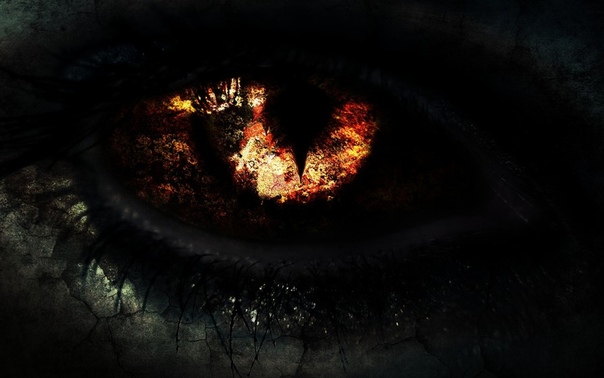 Hemophthalmus suggests that for blood to accumulate in the lower part of the optic organ, it is required to lie horizontally, while the head should be raised 35-40 °.
Hemophthalmus suggests that for blood to accumulate in the lower part of the optic organ, it is required to lie horizontally, while the head should be raised 35-40 °.
During prevention and treatment, it is necessary to exclude the use of medications that contribute to blood thinning (aspirin, anticoagulants), provoke further hemophthalmus. If the attending doctor prescribed them earlier due to the fact that hemophthalmus was accompanied by a concomitant disease, it is required to weigh the risks of discontinuing the drug and the positive effect of taking it.
The prognosis of treatment is determined by the cause of the pathology, the timeliness of the visit to the doctor, the correct selection of the surgical procedure and whether the operation was performed correctly.
Contraindications for disease
Hemophthalmus means that at any stage of the disease, the following are completely contraindicated:
- physical activity;
- weight lifting;
- drinking alcohol, smoking.
90,049 classes in the gym, dancing;
90,049 running;
These factors can significantly aggravate hemophthalmus, provoke additional stress on the eyes and blood vessels, which can cause repeated bleeding and relapses after the operation has been completed.
Cost of initial admission, research, treatment
Patients diagnosed with hemophthalmus or suspected of having this disease can undergo an initial appointment at the clinic of Medicina JSC. Qualified ophthalmologists will conduct an eye examination, diagnostics using modern devices and prescribe the appropriate medication or surgical treatment.
At the reception, the ophthalmologist, by examining the vitreous body of the eye, the cornea, draws conclusions about how much hemorrhage the patient has and how to treat hemophthalmus at a particular stage. You can also check the cost of appointments and treatment with specialists by phone or directly at the clinic.
Benefits of treatment in the clinic of JSC “Medicine”
At Medicina JSC (Academician Roitberg’s Clinic), patients with suspected hemophthalmos can undergo qualified treatment on an outpatient basis or in a comfortable hospital.The clinic employs ophthalmologists who have significant experience in the treatment of various diseases of the vitreous body, cornea, and retina.
If a doctor prescribes an operation, the intervention is carried out using modern laser equipment, which minimizes the rehabilitation period. During the treatment of the eyes, patients stay in a hospital, where comfortable conditions are provided, which allows them to completely cure hemophthalmus, to prevent the occurrence of relapses in the future.
Hemophilia – what is this disease?
How is hemophilia transmitted and what are the symptoms?
For the majority of ignorant people, hemophilia is the so-called royal disease, they know about it only from history: they say, Tsarevich Alexei suffered from it.Due to a lack of knowledge, people often believe that ordinary people cannot get hemophilia. It is believed that it affects only ancient genera. But hemophilia is a hereditary disease, and any child whose ancestors had such a disease can get it.
What is hemophilia?
The people call the disease “liquid blood”. Indeed, its composition is pathological, in connection with which the ability to coagulate is impaired. The slightest scratch and the bleeding is difficult to stop.However, these are external manifestations. Much more difficult are the internal ones, occurring in the joints, stomach, kidneys. Hemorrhages in them can be caused even without outside influence and carry dangerous consequences.
Twelve special proteins are responsible for blood clotting, which must be present in the blood at a certain concentration. Hemophilia is diagnosed when one of these proteins is absent at all or is present in insufficient concentration.
There are three types of this disease in medicine.
Hemophilia A. Caused by the absence or deficiency of coagulation factor VIII. The most common type of disease is, according to statistics, 85 percent of all cases of the disease. On average, one out of 10,000 babies is diagnosed with this type of hemophilia.
Hemophilia B . It has problems with factor IX. It is marked as much more rare: the risk of getting it is six times lower than in the case of option A.
Hemophilia C. Factor XI is missing. This variety is unique: it is characteristic of both men and women. It is worth noting that in a third of families this disease occurs (or is diagnosed) for the first time, which becomes a blow to unprepared parents.
Why does disease occur? The culprit is a congenital hemophilia gene located on the X chromosome. It is carried by a woman, and she herself is not a patient, unless there may be frequent nosebleeds, too heavy menstruation or more slowly healing small wounds (for example, after a tooth is pulled out).The gene is recessive, so not everyone whose mother is a carrier of the disease gets sick. Usually the probability is 50:50. It rises if the father is also sick in the family. Girls become carriers of the gene without fail.
Why hemophilia is a male disease. As already mentioned, the hemophilia gene is recessive and attaches to a chromosome called X. Women have two such chromosomes. If one is affected by such a gene, it turns out to be weaker and is suppressed by the second, dominant, as a result of which the girl remains only a carrier through which hemophilia is transmitted, but she herself remains healthy.It is likely that at conception, both X chromosomes may contain the corresponding gene. However, when the fetus forms its own circulatory system (and this happens in the fourth week of pregnancy), it becomes unviable, and a spontaneous abortion (miscarriage) occurs. Men are another matter. They do not have a second X chromosome, it is replaced by Y. There is no dominant “X”, therefore, if the recessive one manifests itself, then it is the course of the disease that begins, and not its latent state. However, since there are still two chromosomes, the likelihood of such a plot development is exactly half of all the chances.
Symptoms of hemophilia. They can manifest themselves already at the birth of a child, if the corresponding factor in the body is practically absent, and they can only make themselves felt over time, if there is a lack of it. Bleeding in the absence of obvious causes. Often, a child is born with blood streaks from the nose, eyes, navel, and it is difficult to stop the bleeding. Hemophilia manifests itself in the formation of large edematous hematomas from an absolutely insignificant effect (for example, pressing with a finger).Repeated bleeding from a seemingly healed wound. Increased household bleeding: nasal, from the gums, even when brushing teeth. Joint hemorrhages. Traces of blood in urine and feces. However, such “signs” do not necessarily indicate hemophilia. For example, nosebleeds can indicate weakness of the walls of blood vessels, blood in the urine – about kidney disease, and in the feces – about an ulcer. Therefore, additional research is required.
Identification of hemophilia . In addition to studying the patient’s anamnesis and examining him, a variety of specialists conduct laboratory tests.First of all, the presence in the blood of all coagulation factors and their concentration is determined. The time it took for the blood sample to clot is set. Often, these analyzes are accompanied by DNA testing. For a more accurate diagnosis, it may be necessary to determine: thrombin time; mixed; prothrombin index; the amount of fibrinogen. Sometimes more highly specialized data is requested. What is most characteristic of hemophilia is joint bleeding.

 Accessed June 6, 2016.
Accessed June 6, 2016.
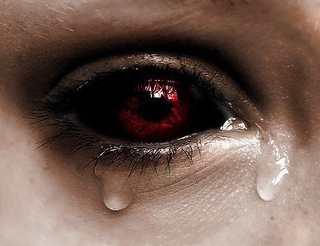




 The technique makes it possible to see damage or foreign bodies, blood clots, to identify adhesion or detachment of the retina, vitreous body of the eye. The B-study mode allows you to determine melanoma, examine the back wall of the eye.
The technique makes it possible to see damage or foreign bodies, blood clots, to identify adhesion or detachment of the retina, vitreous body of the eye. The B-study mode allows you to determine melanoma, examine the back wall of the eye.